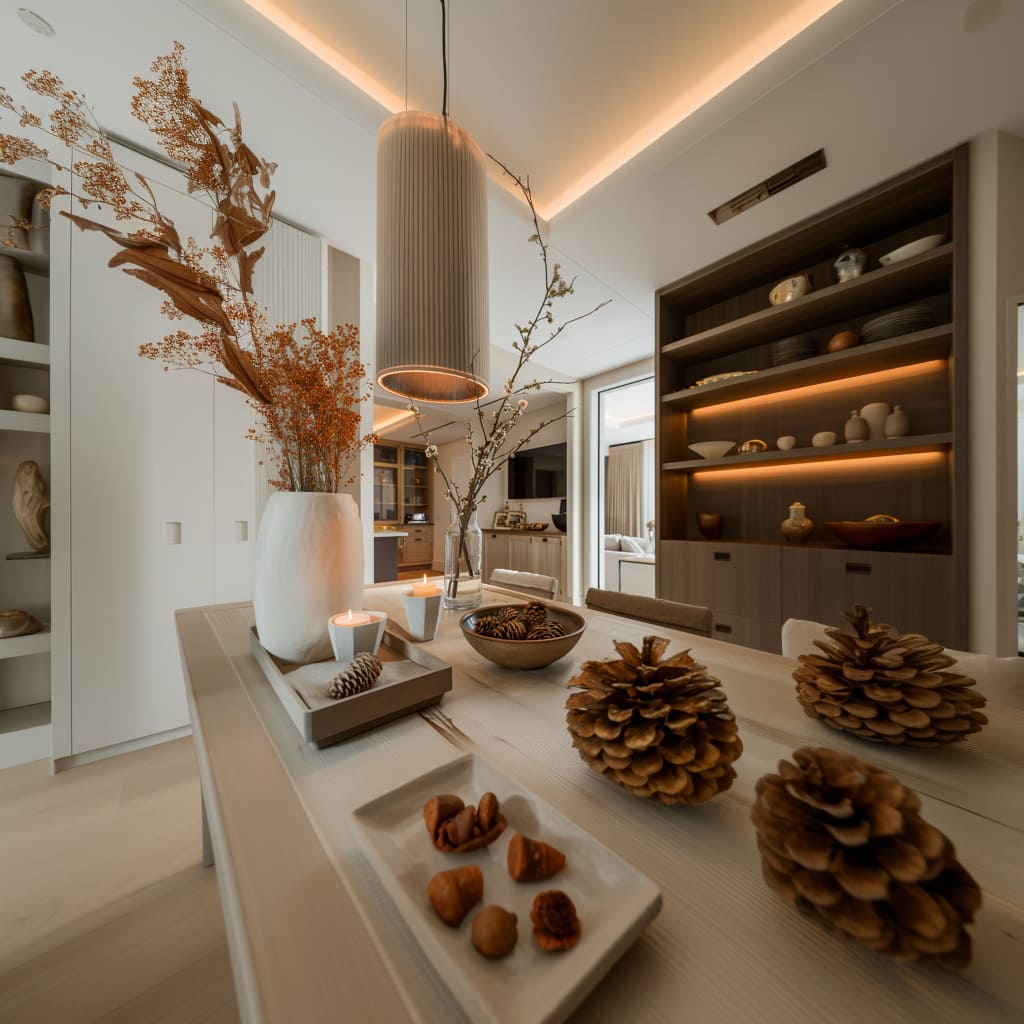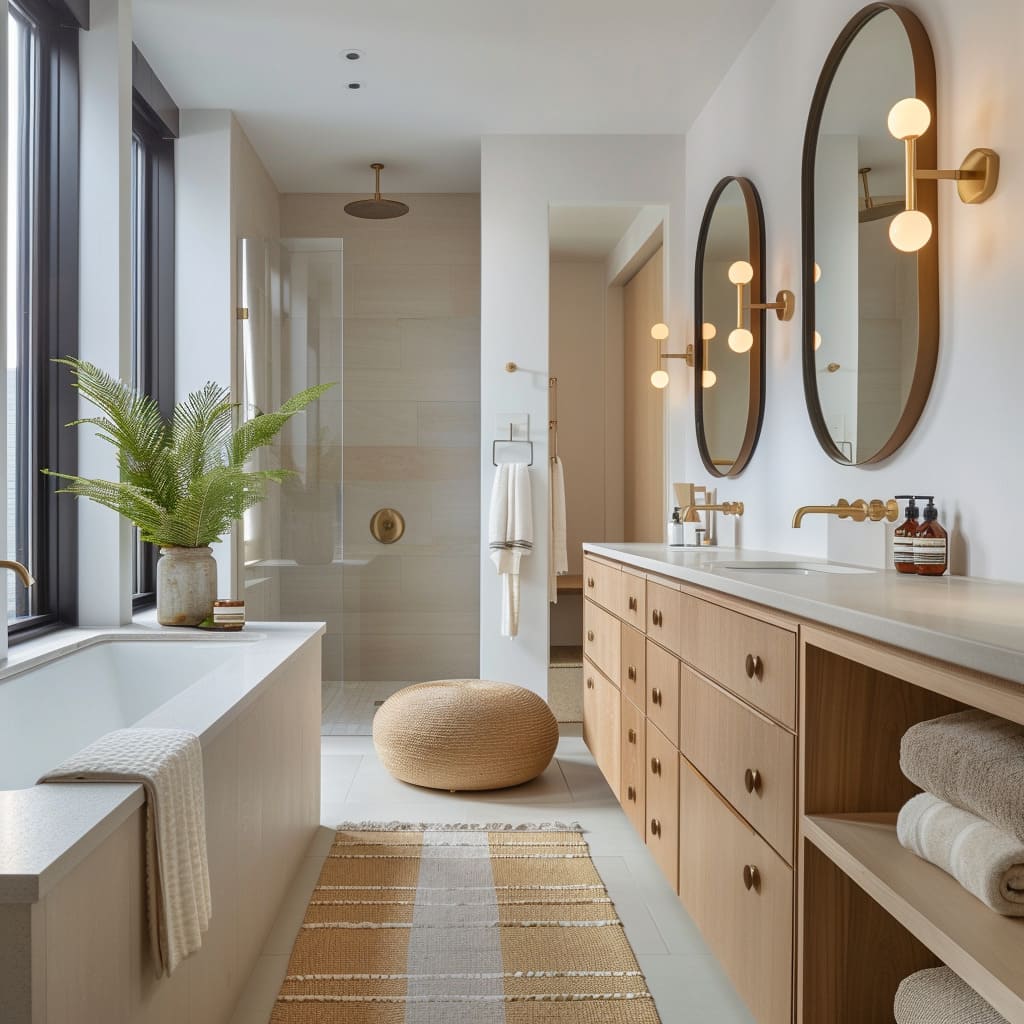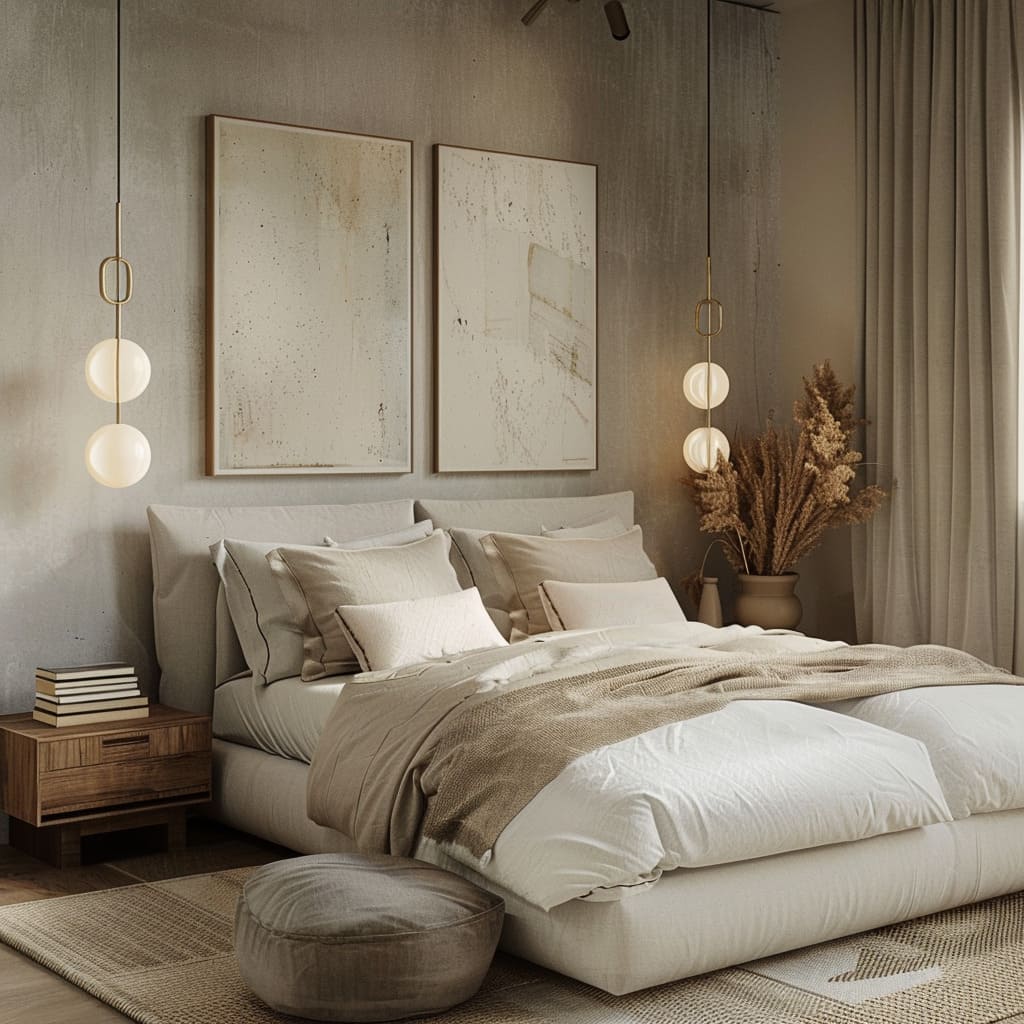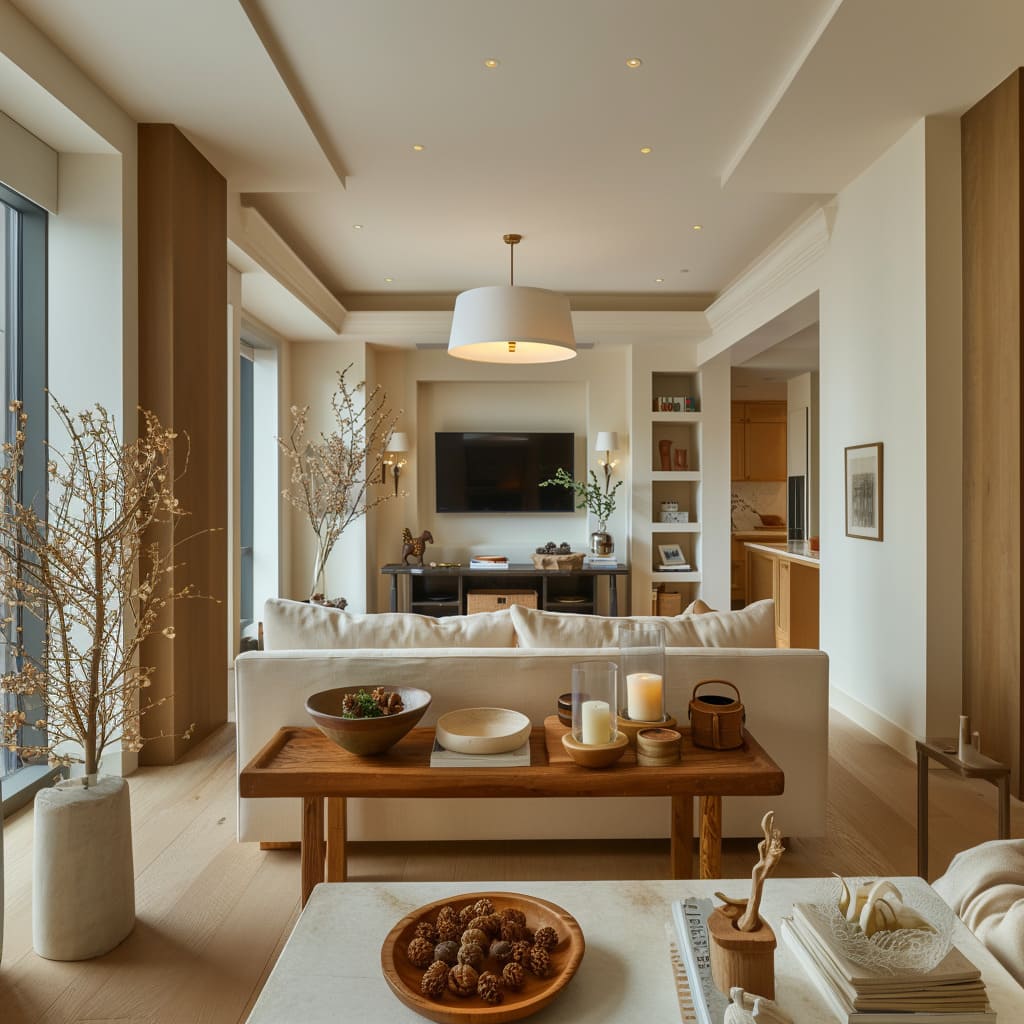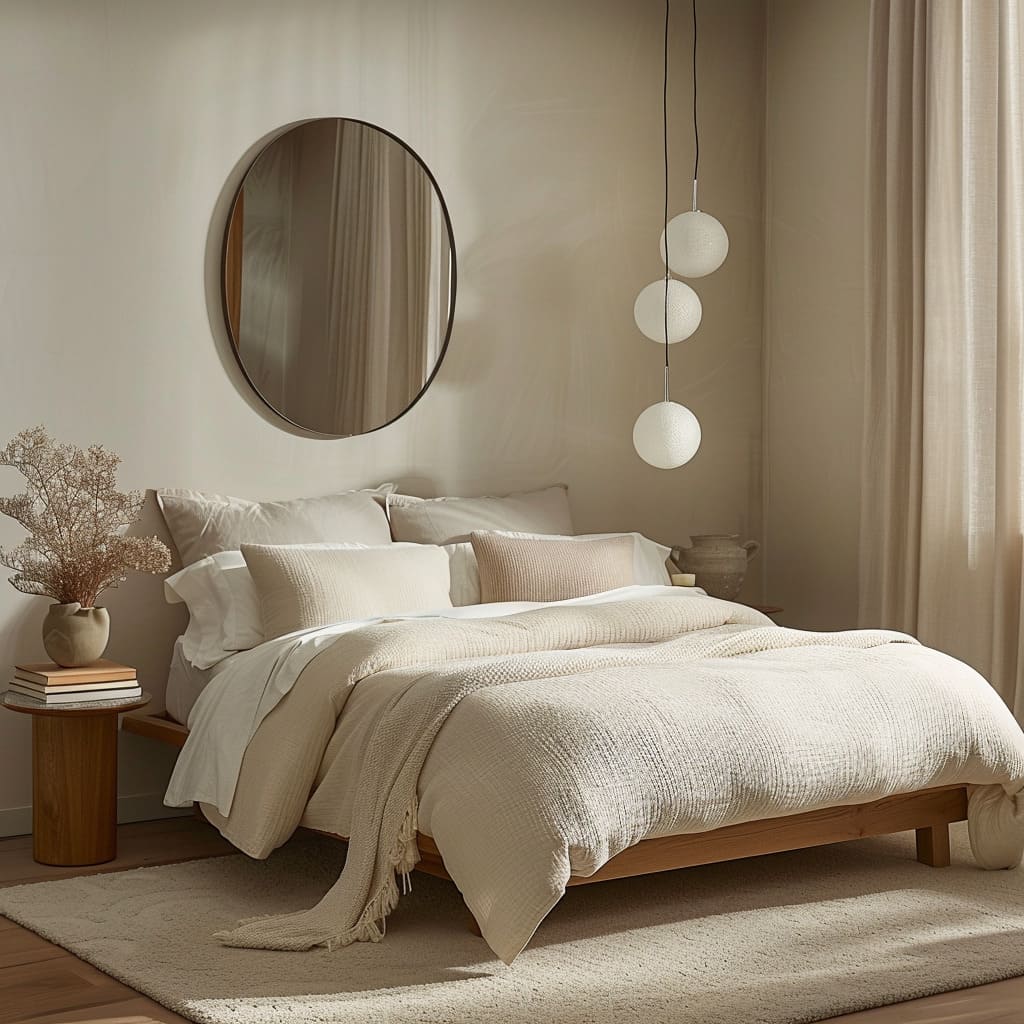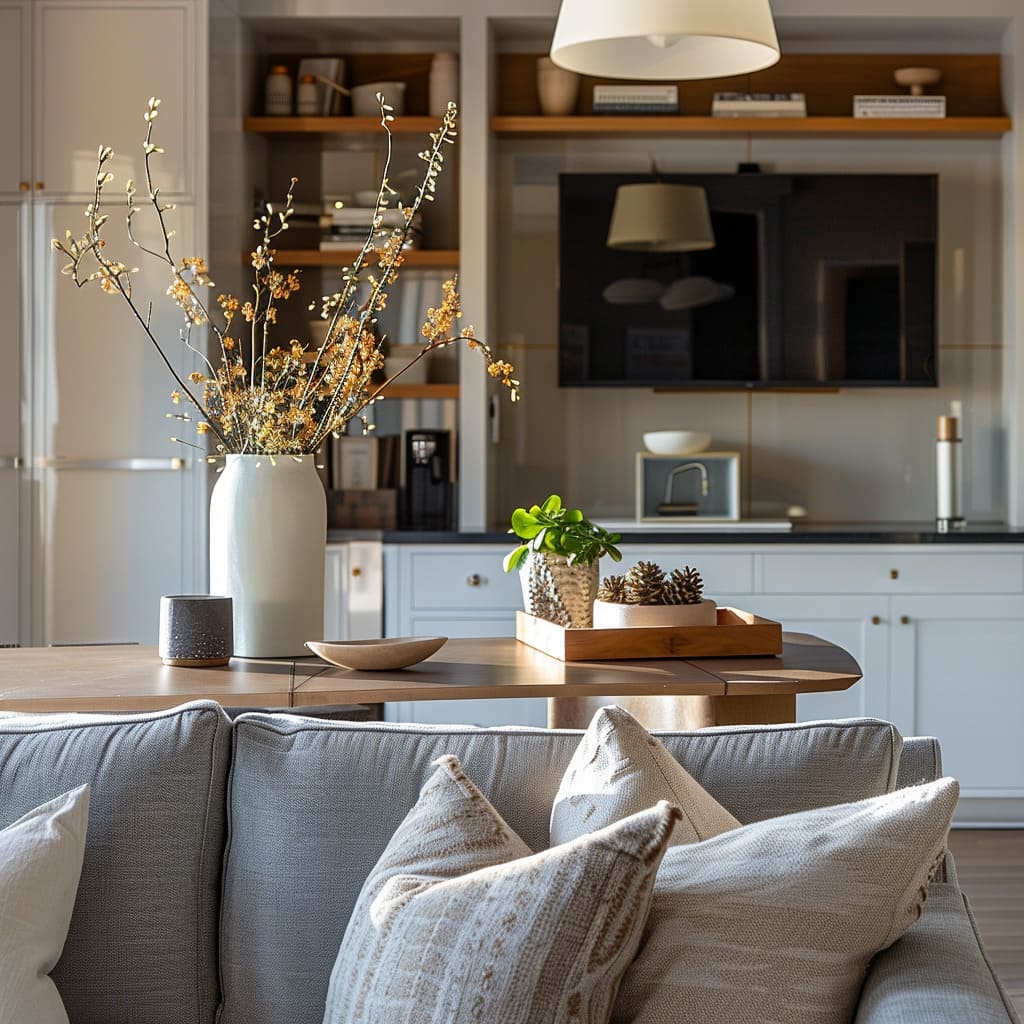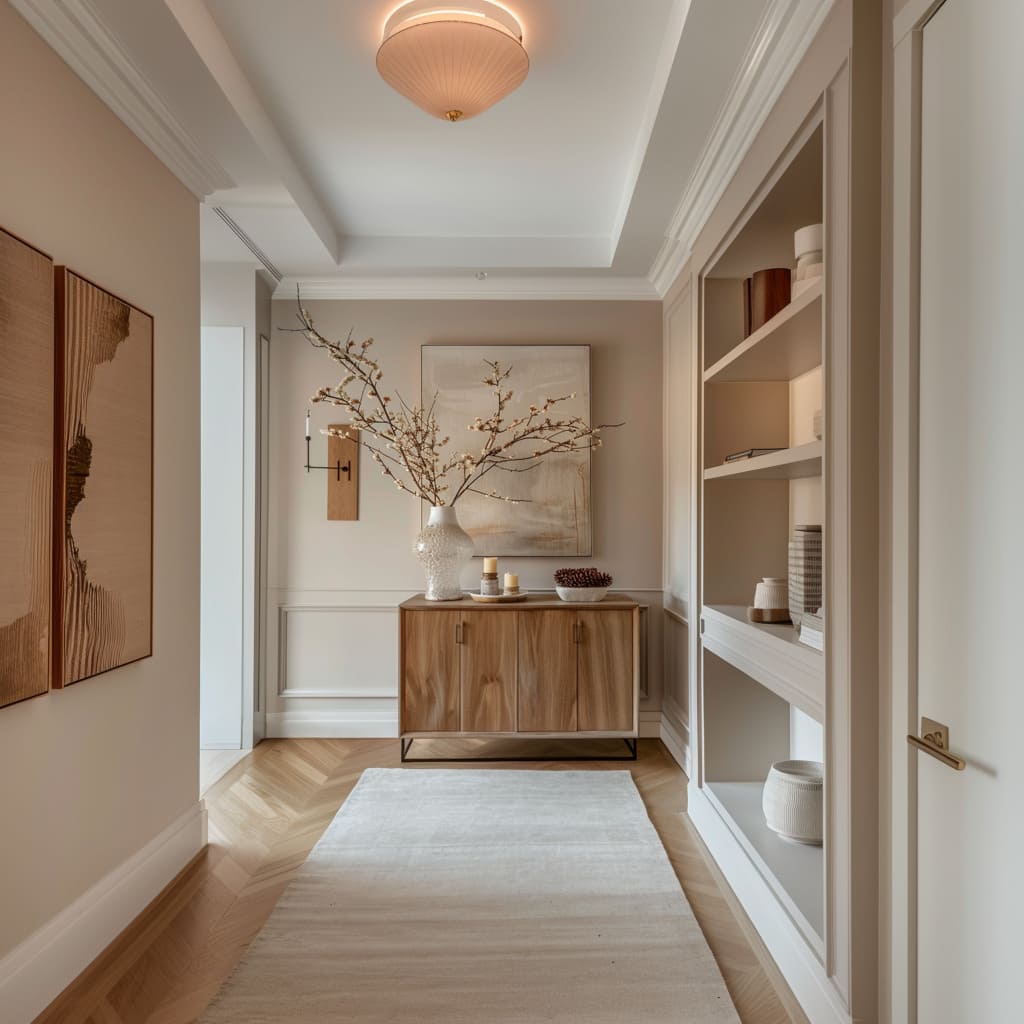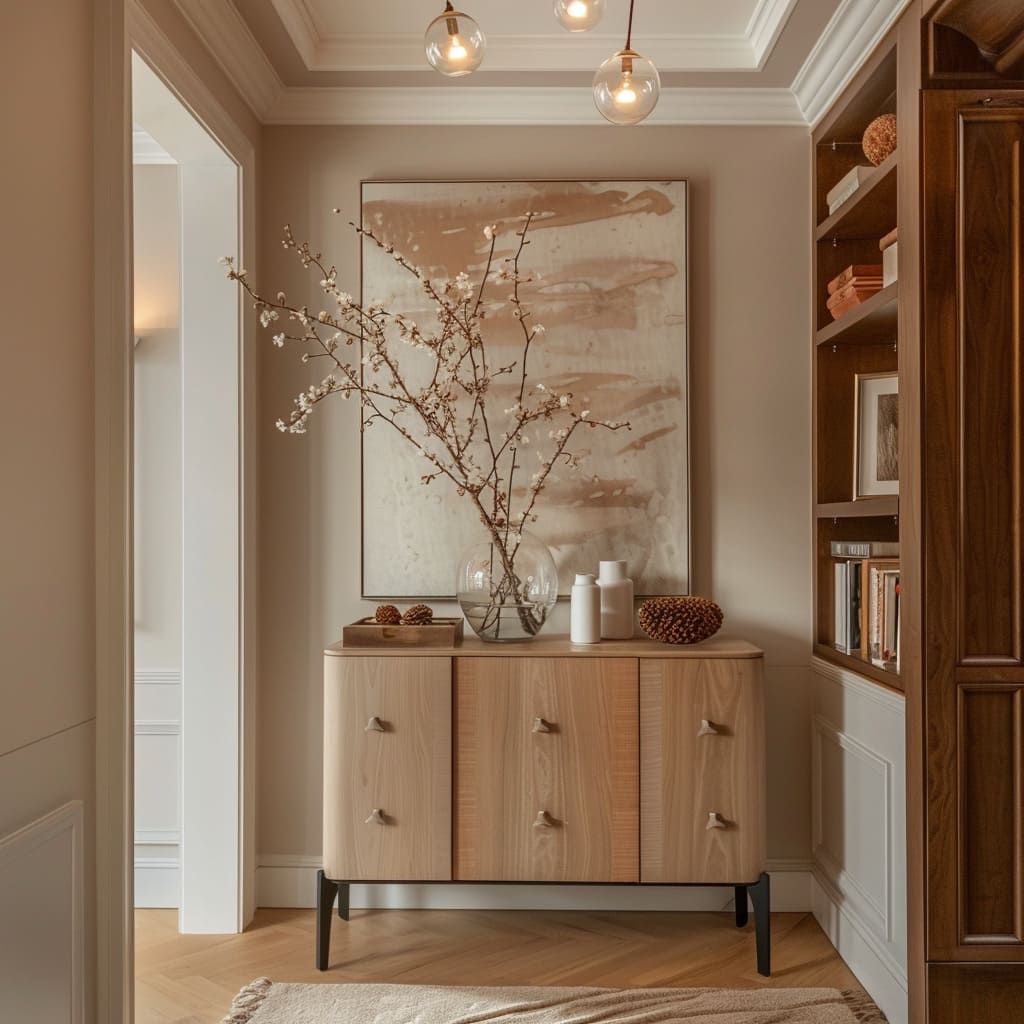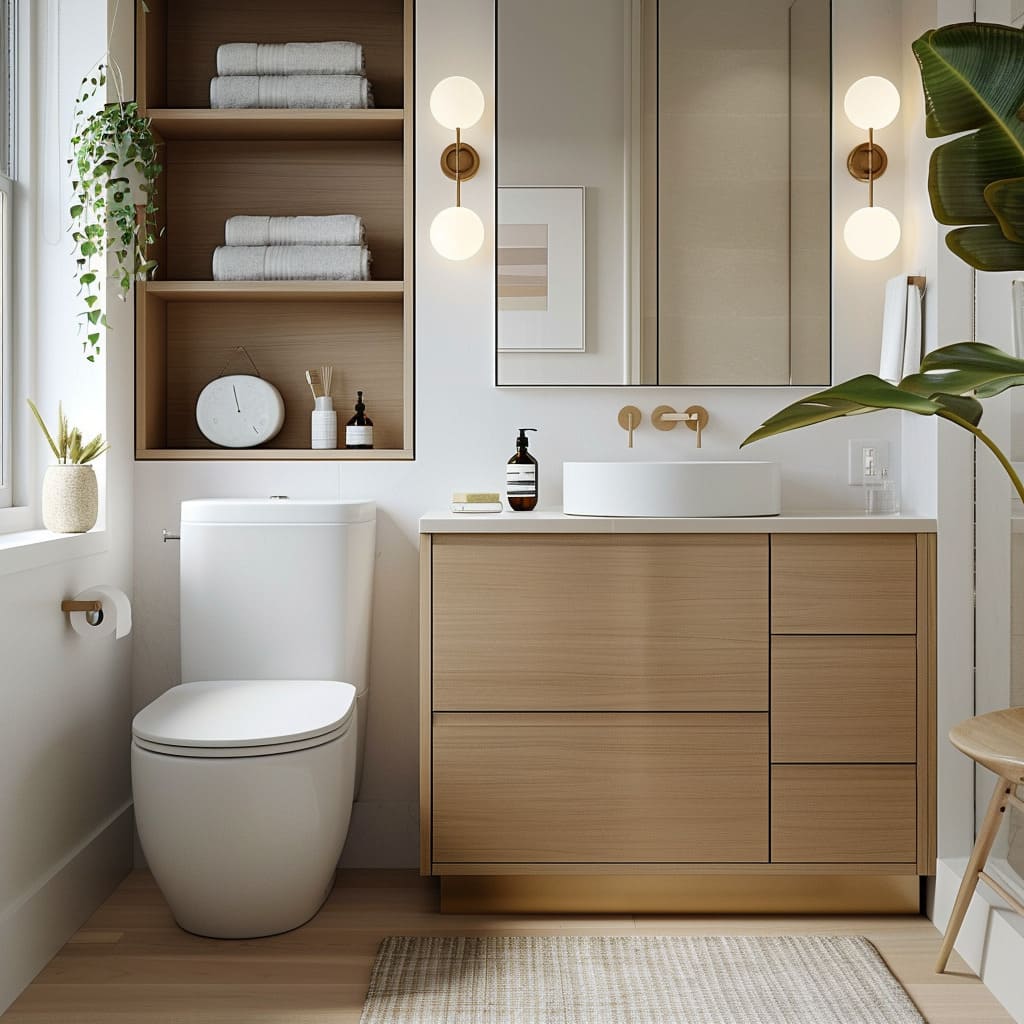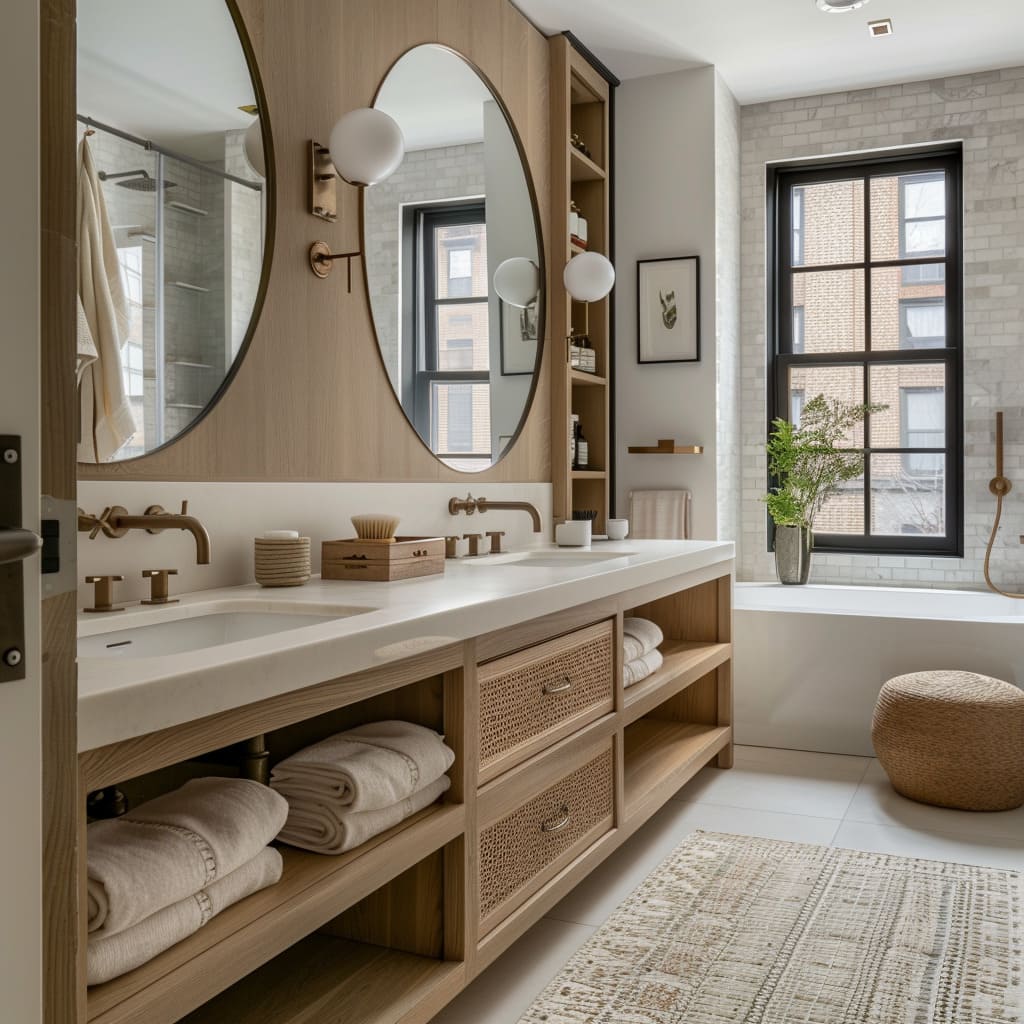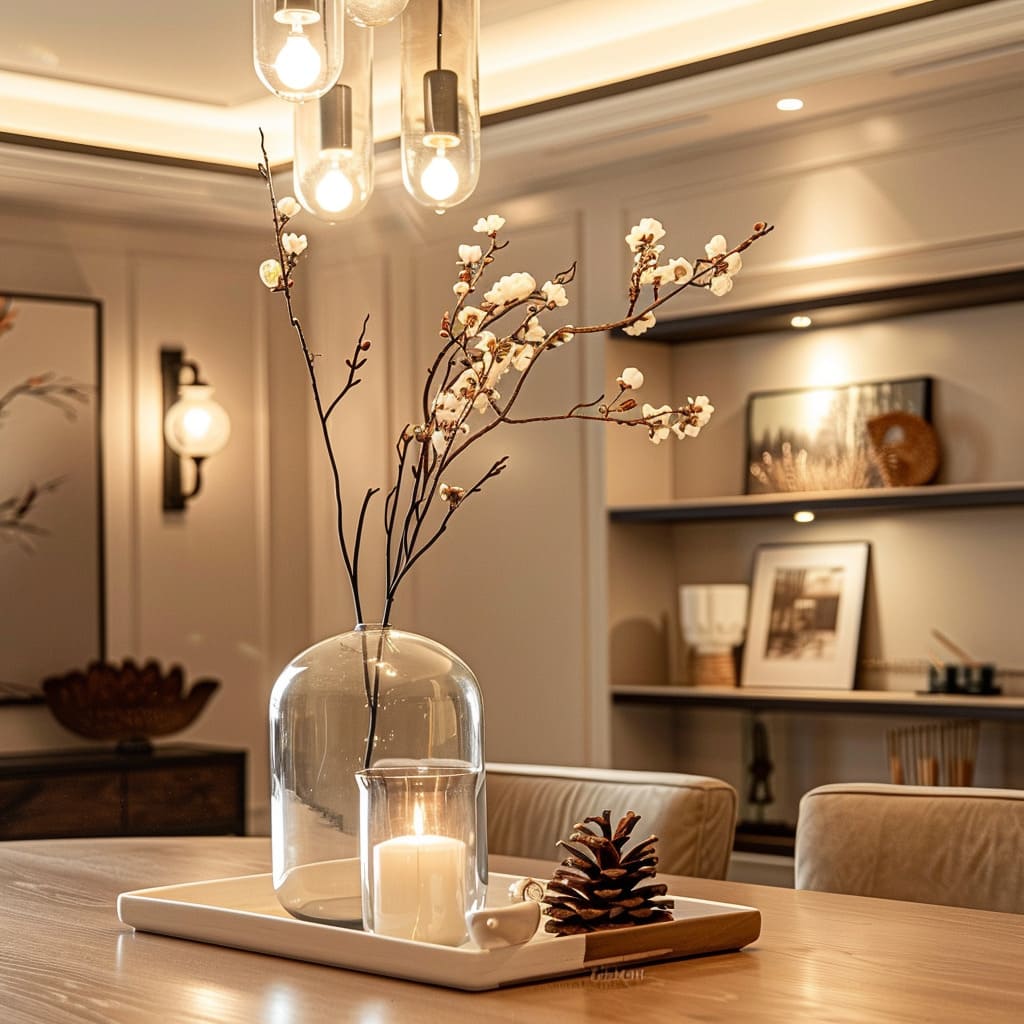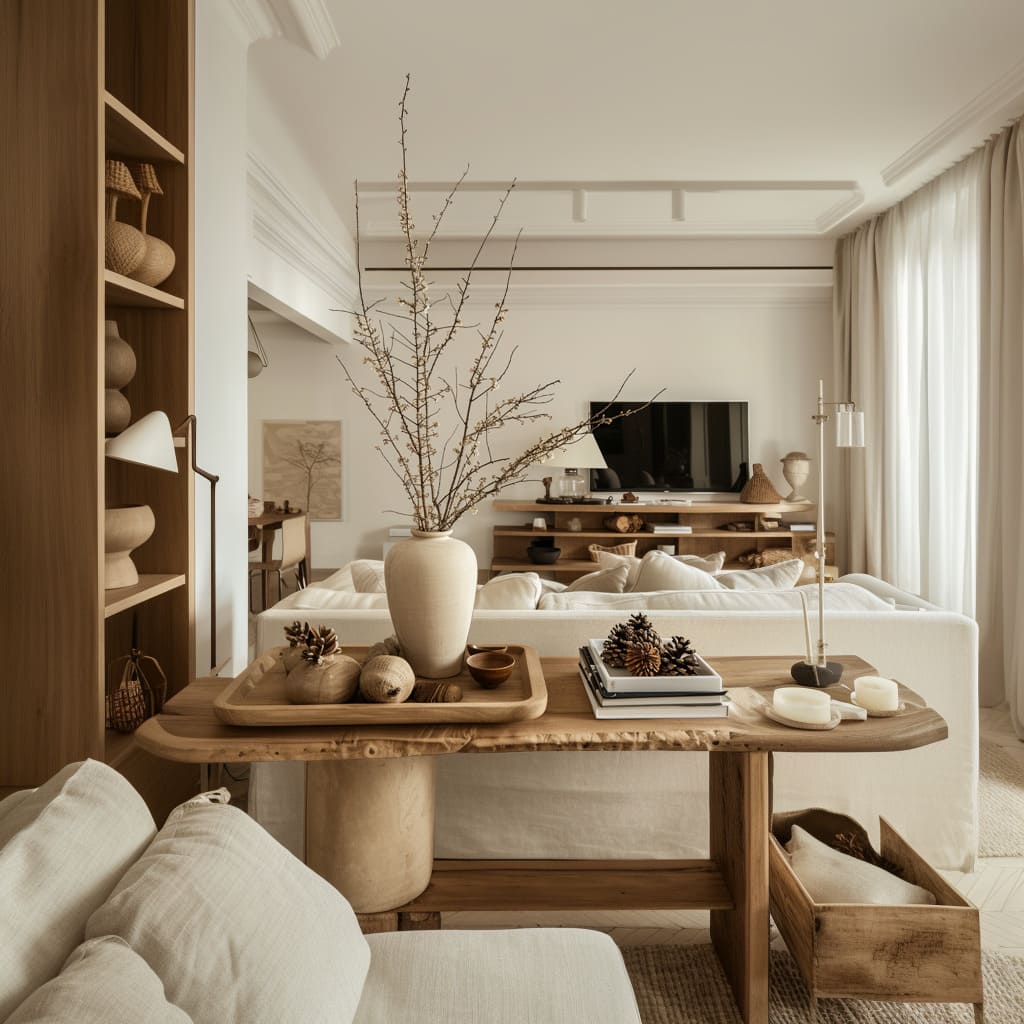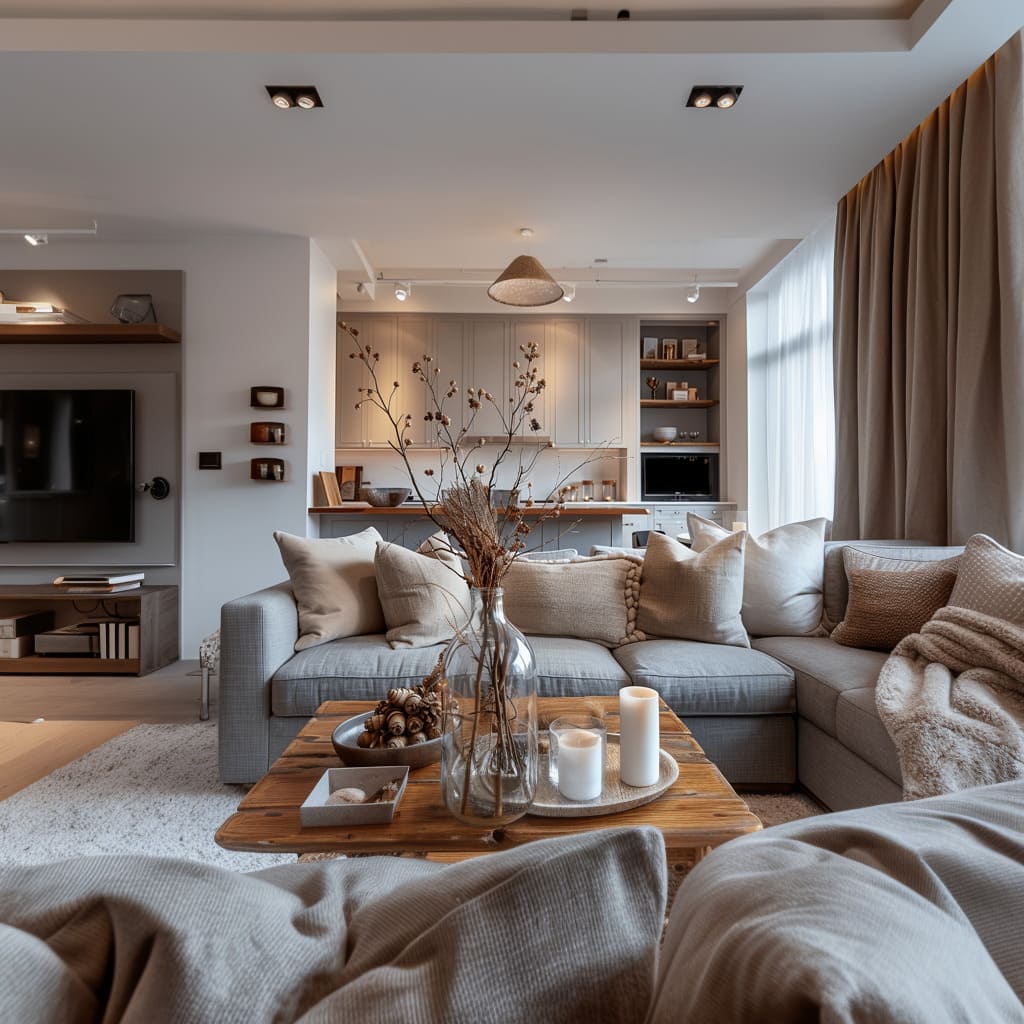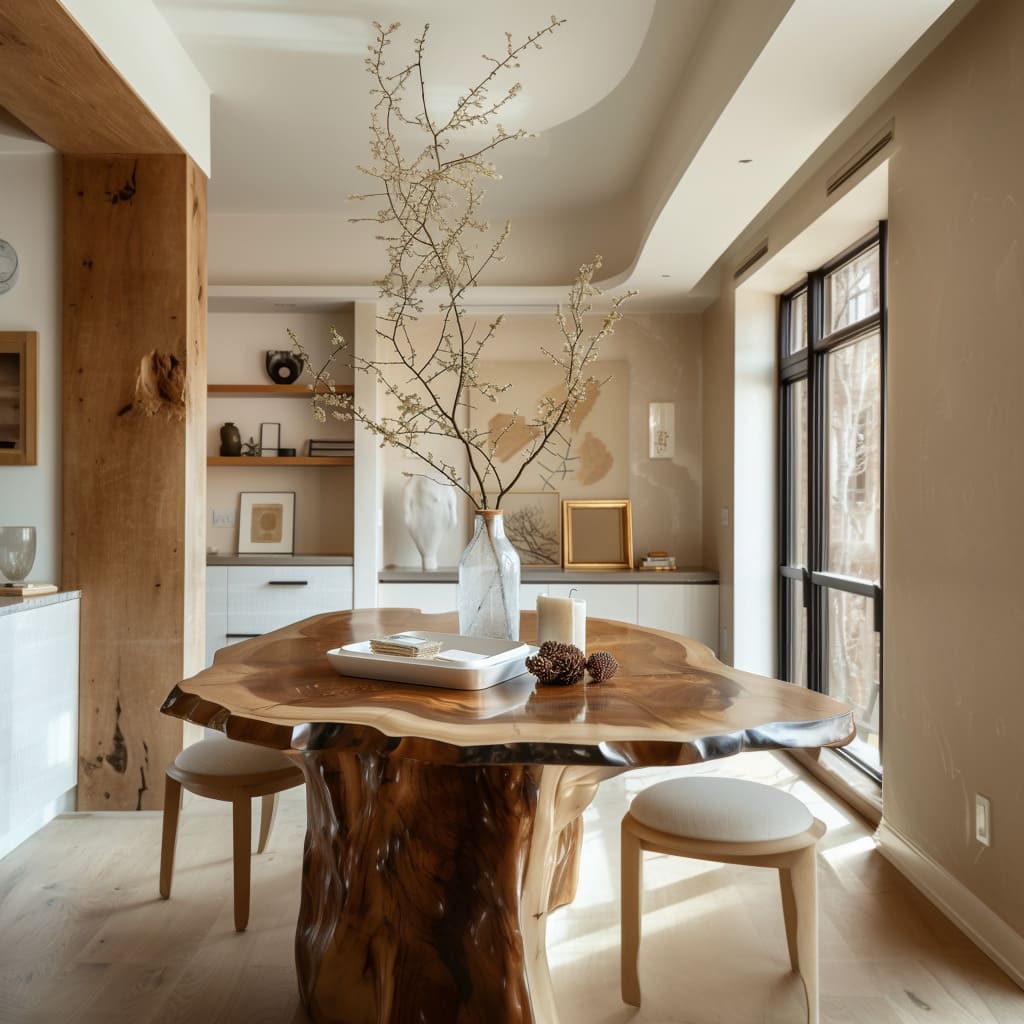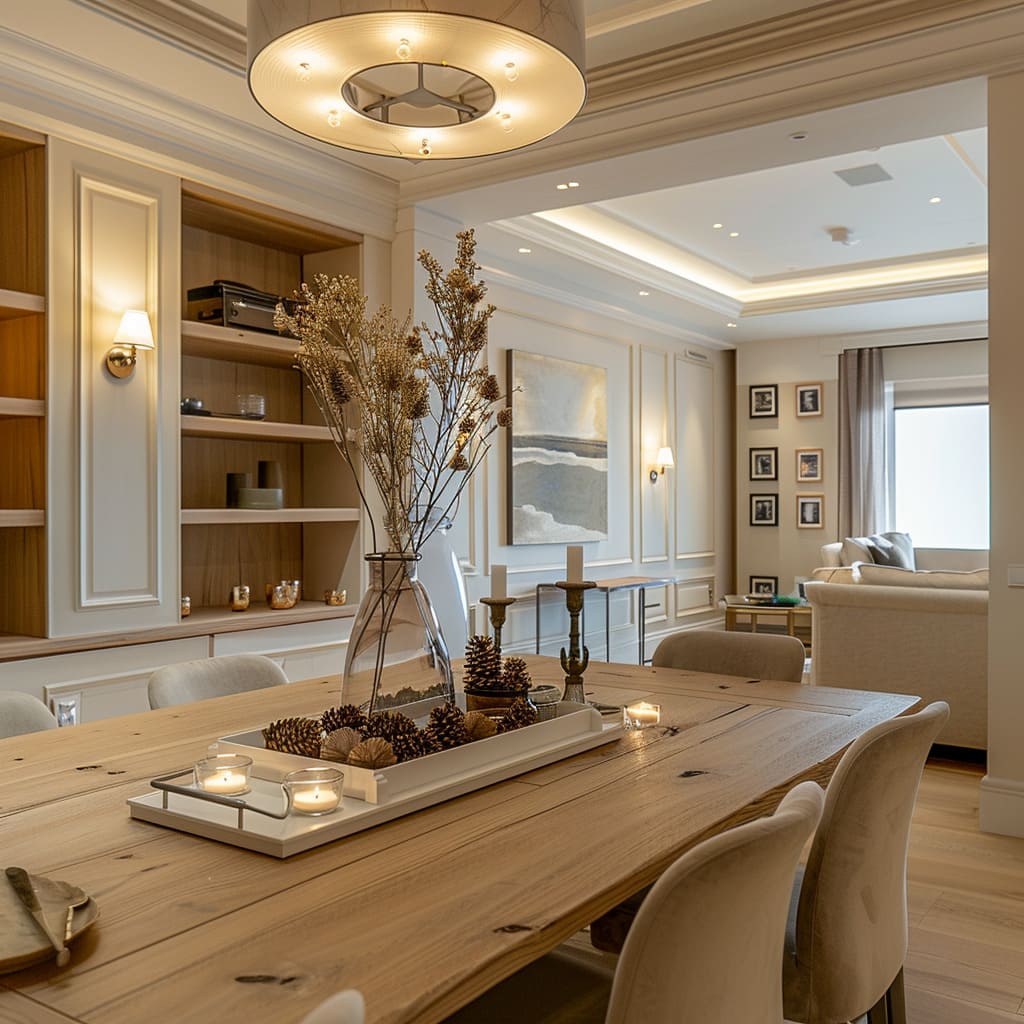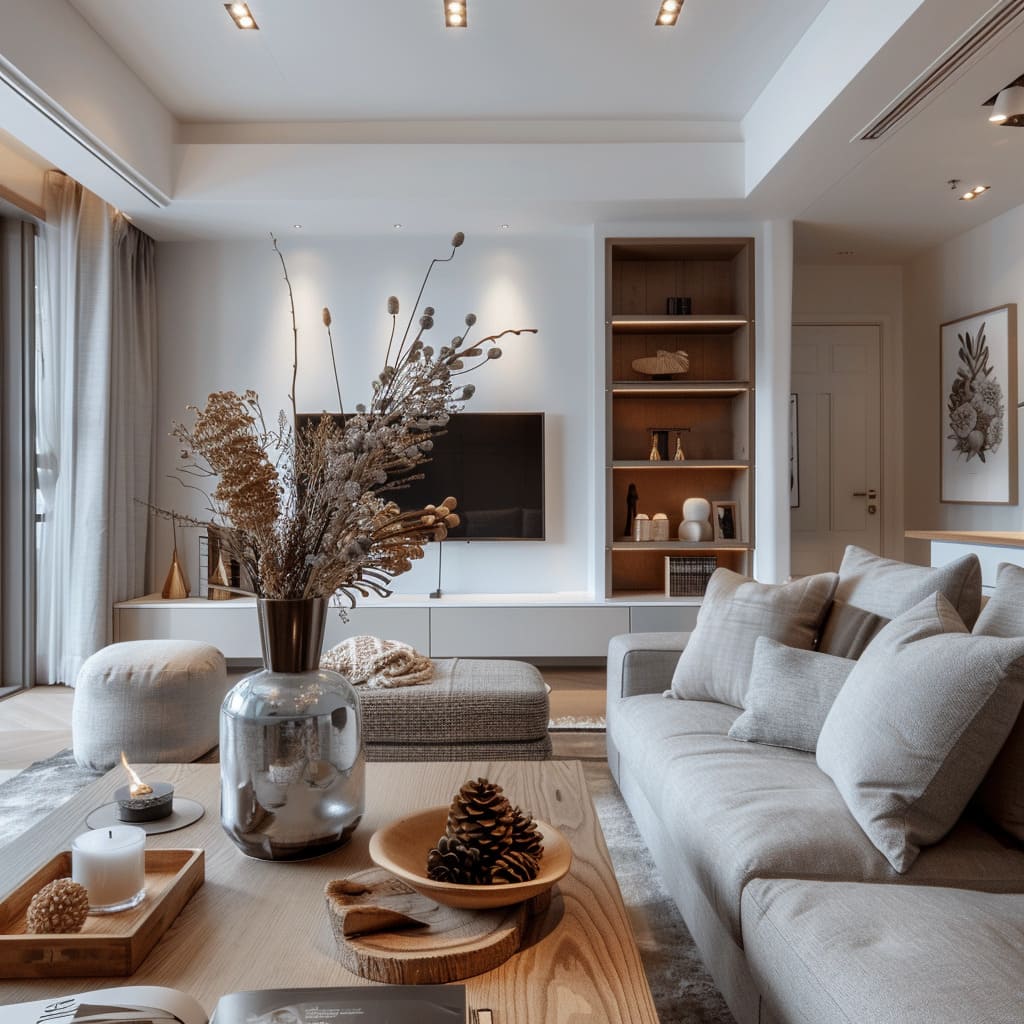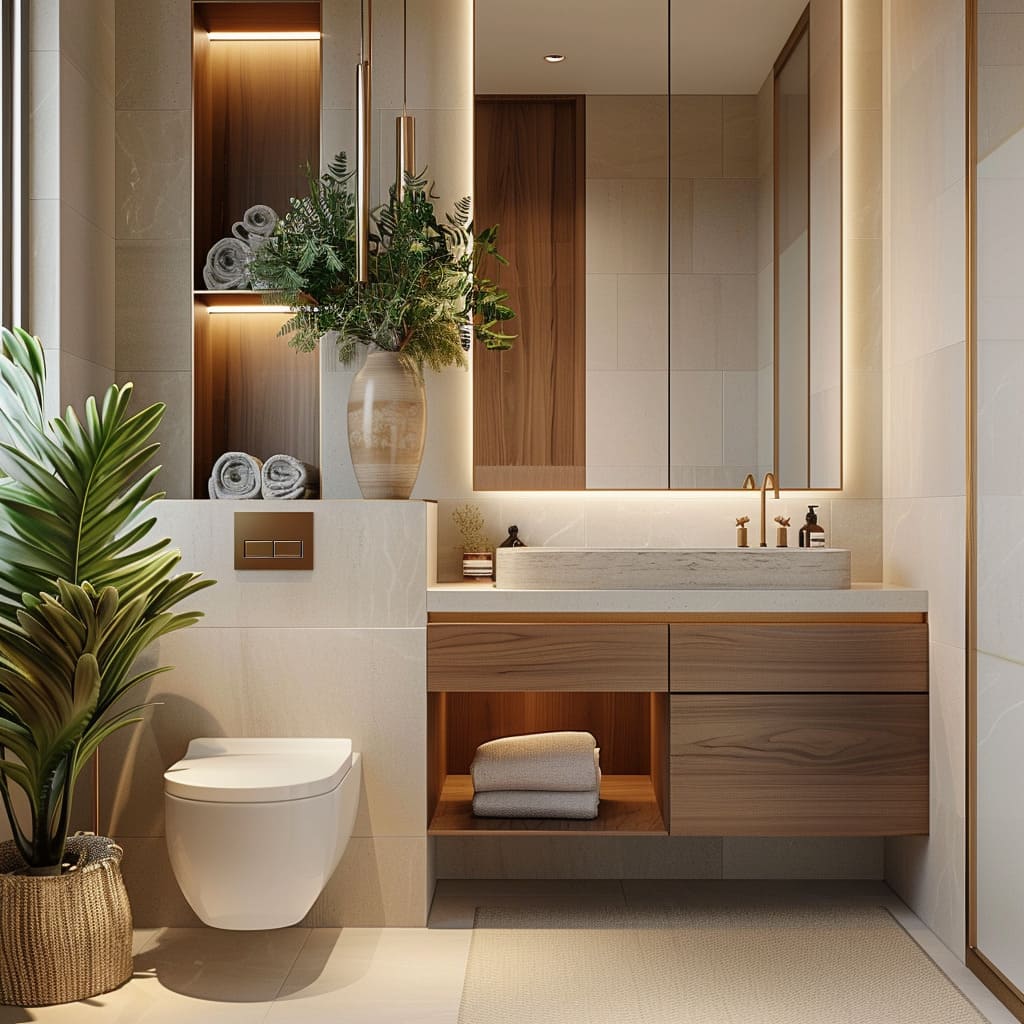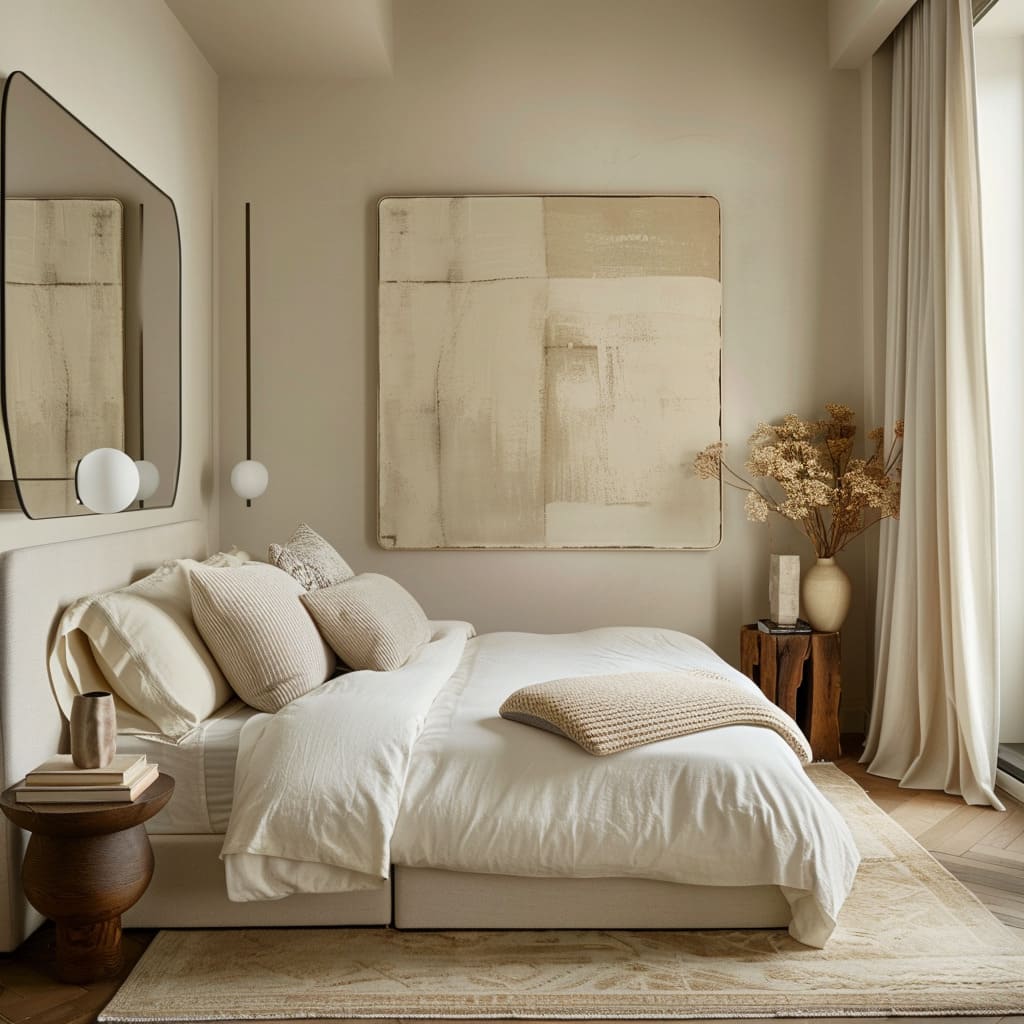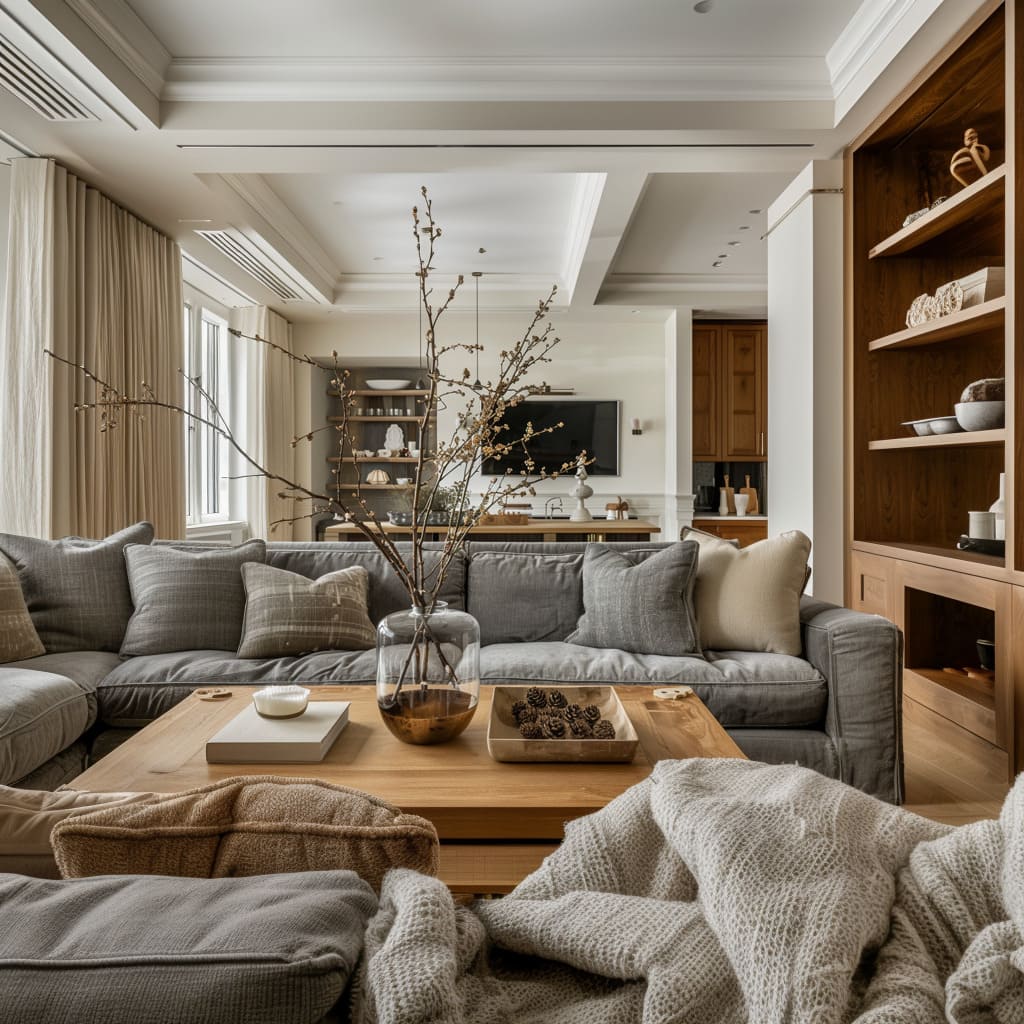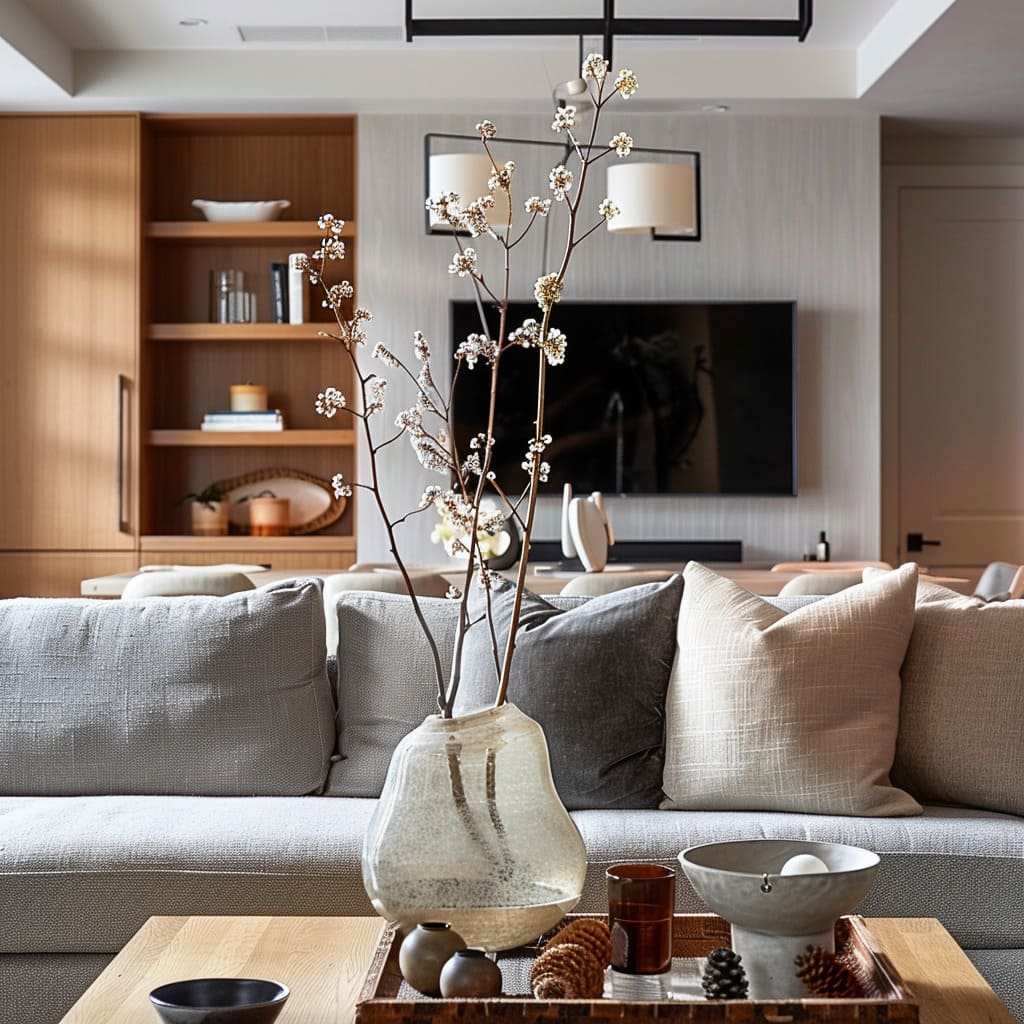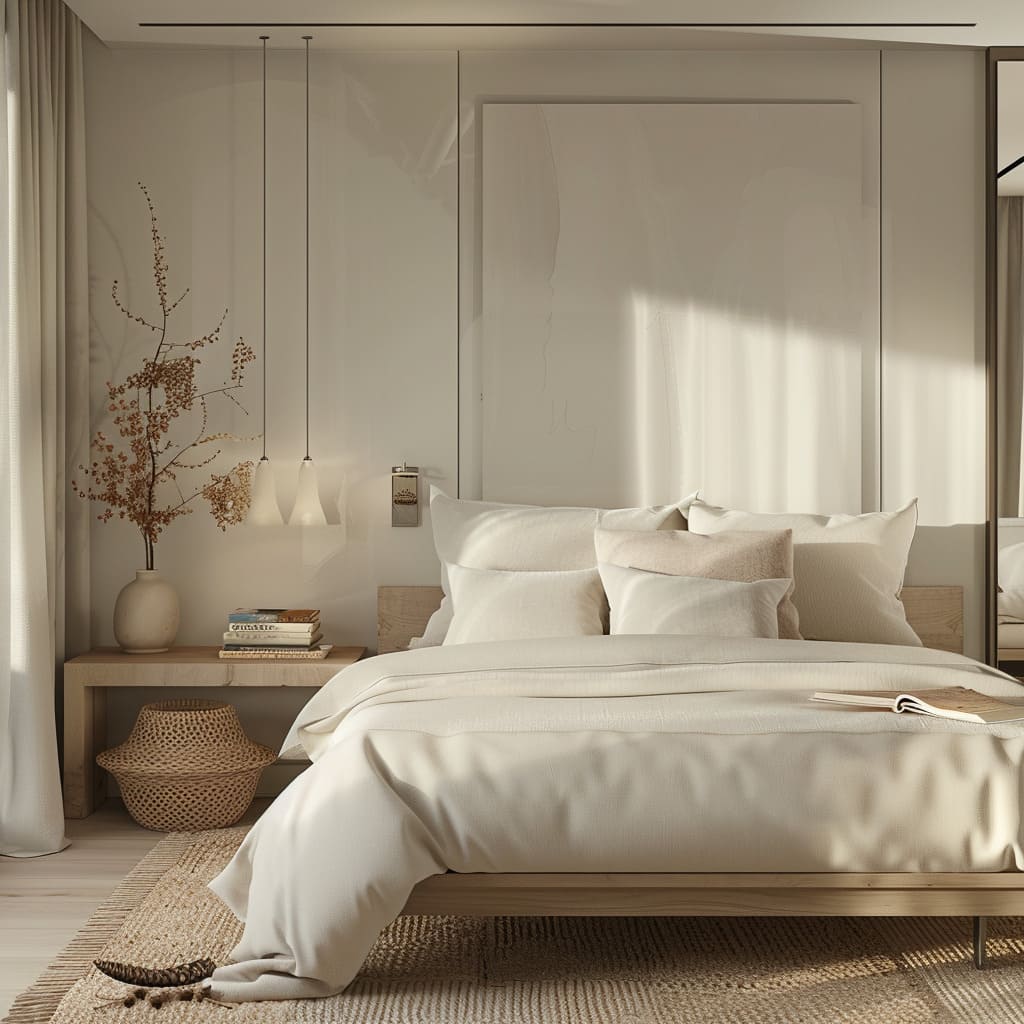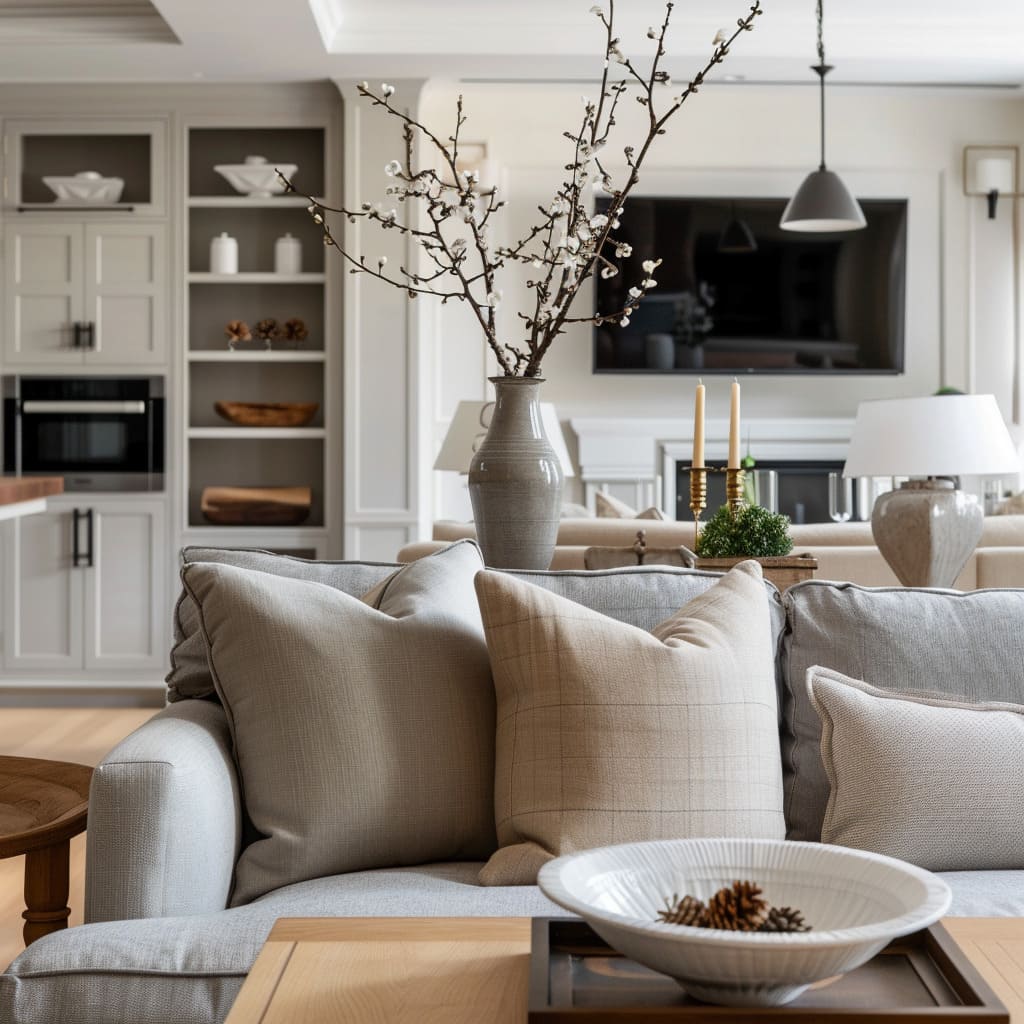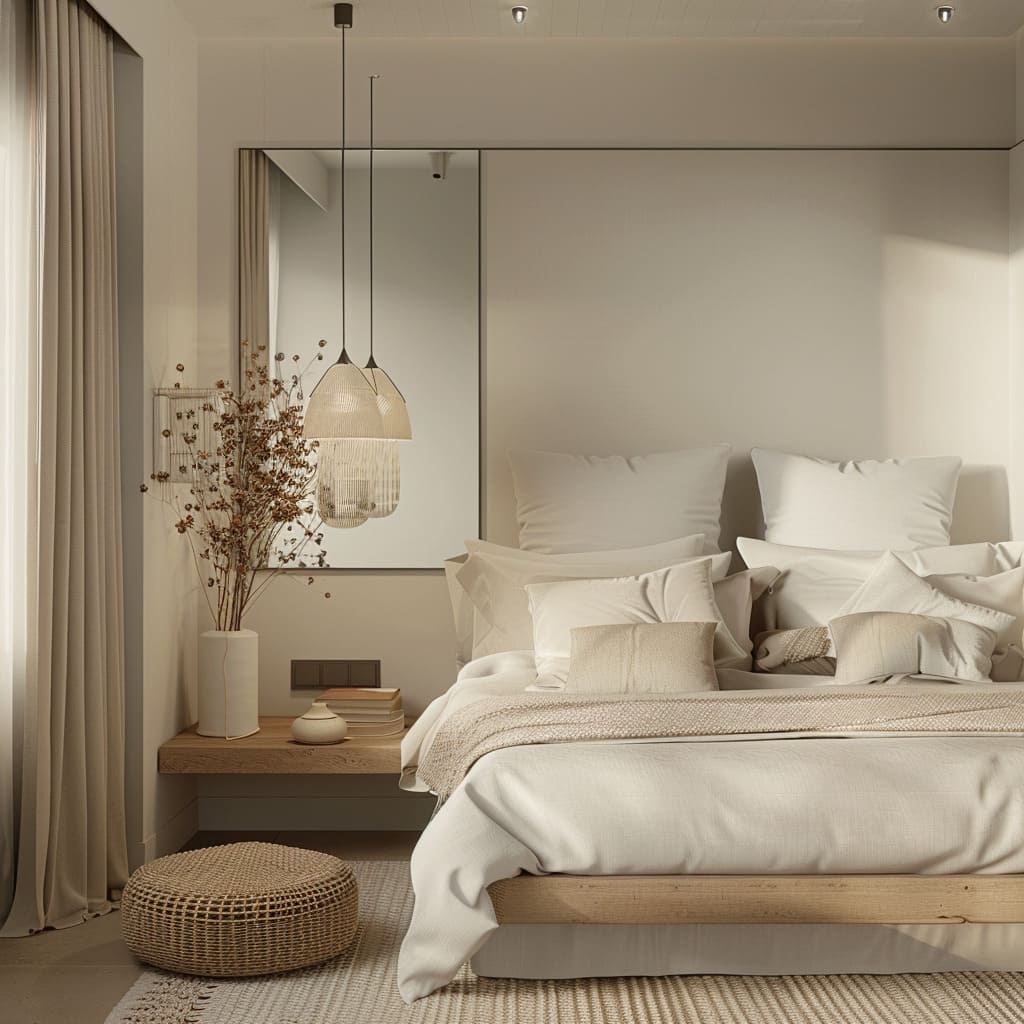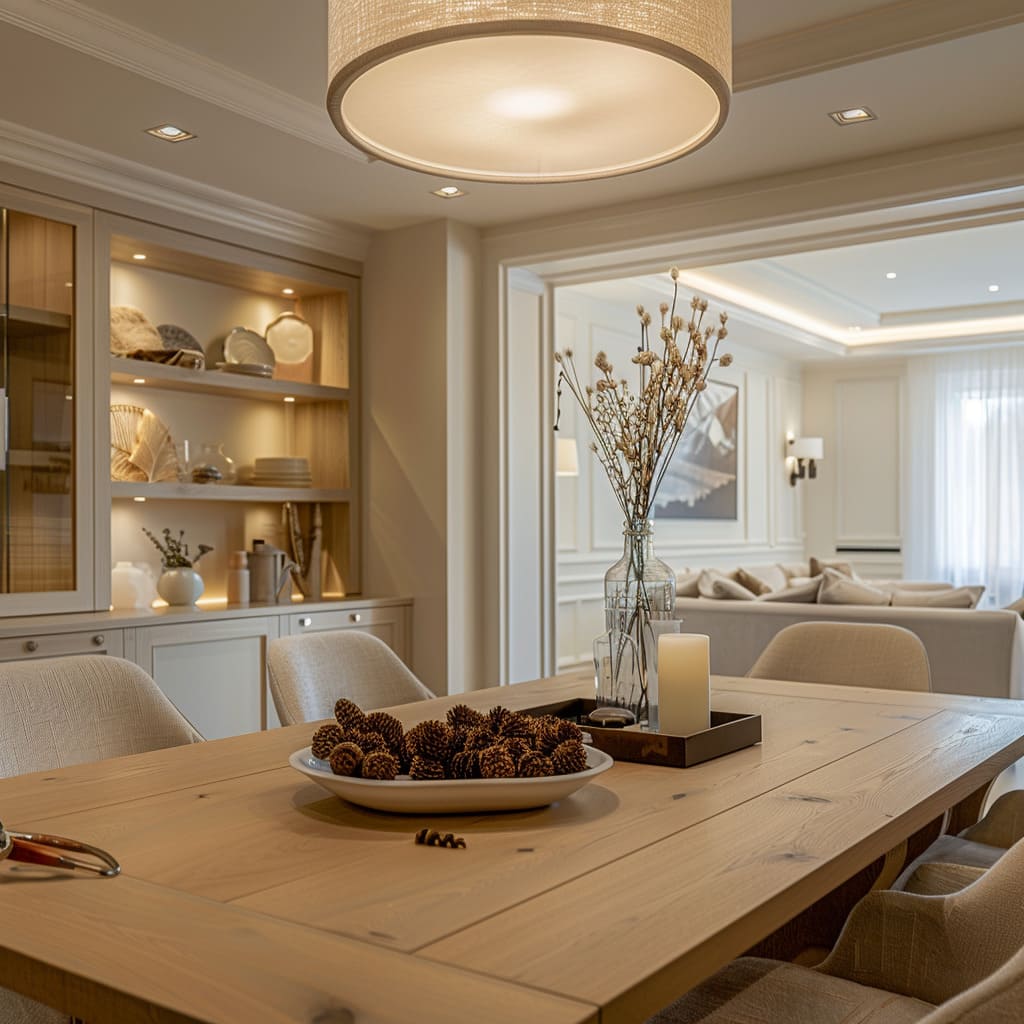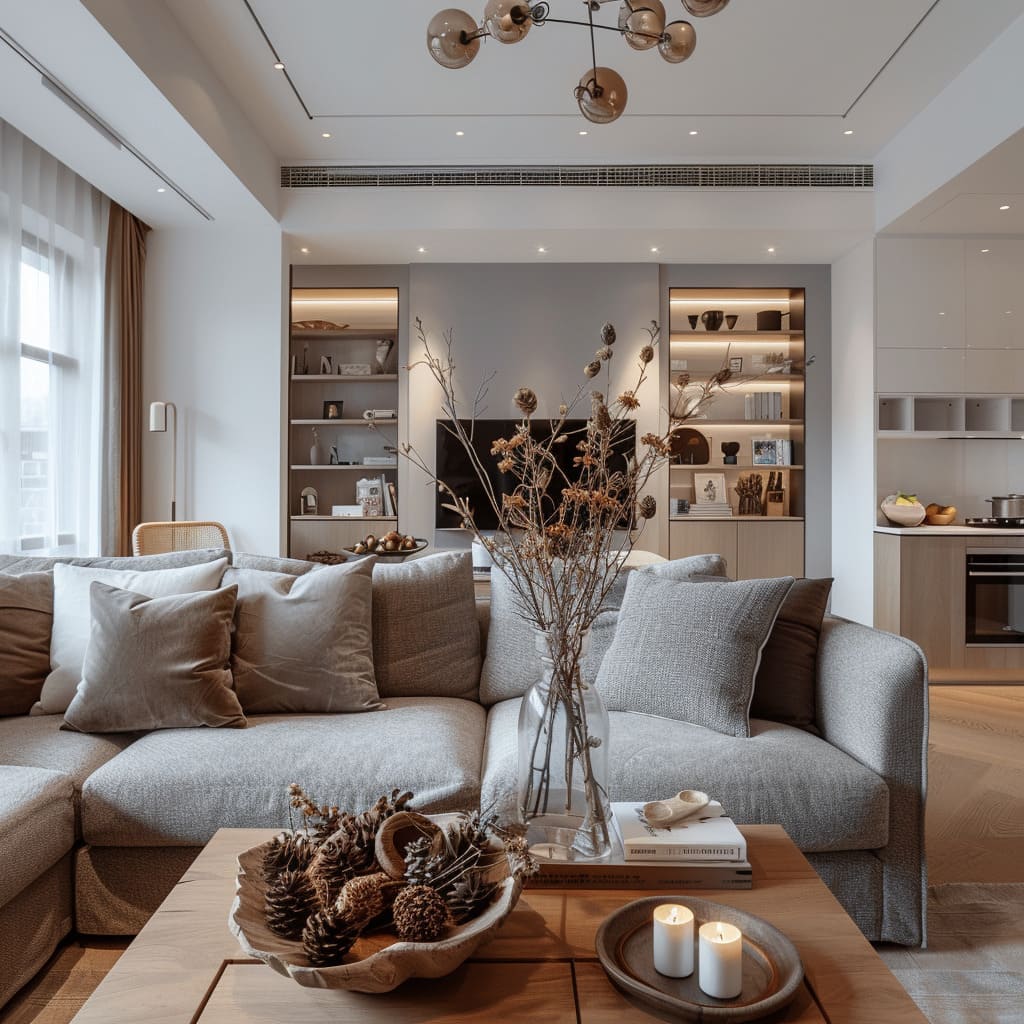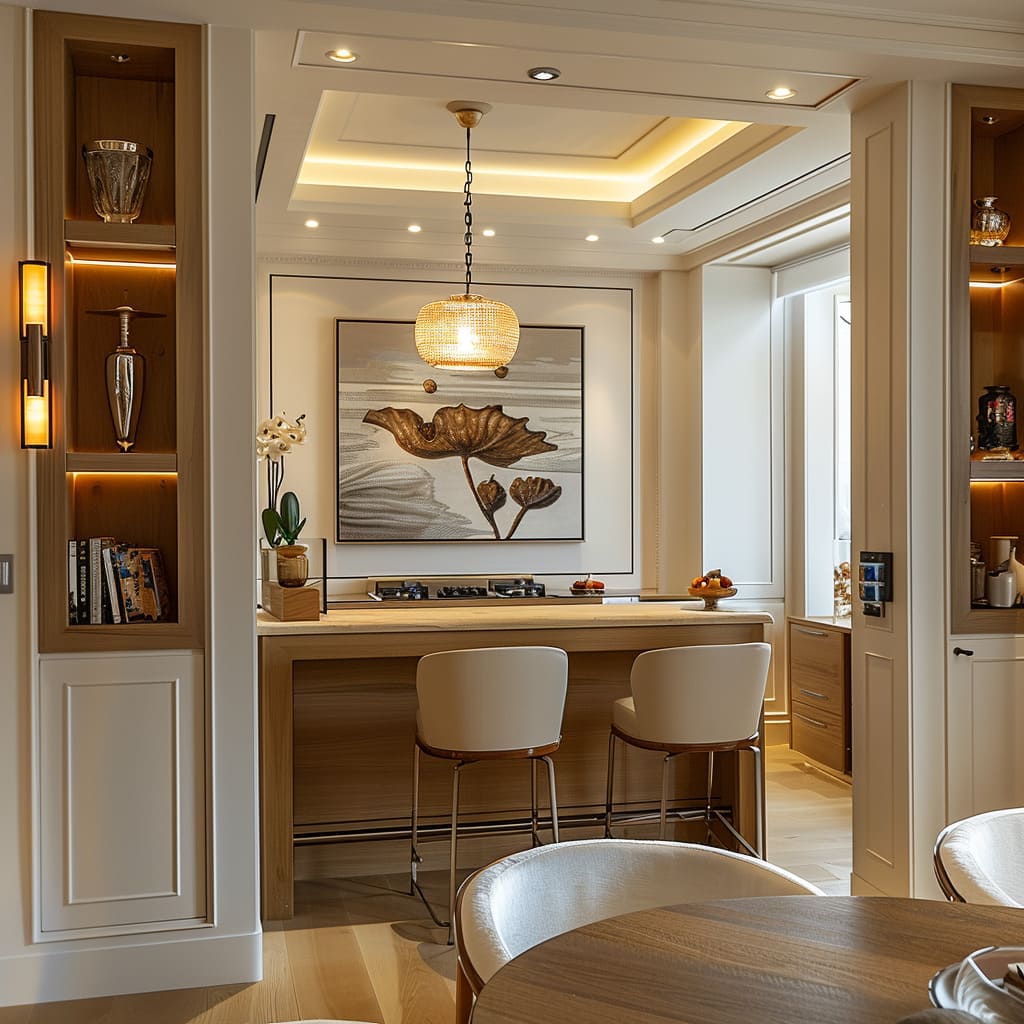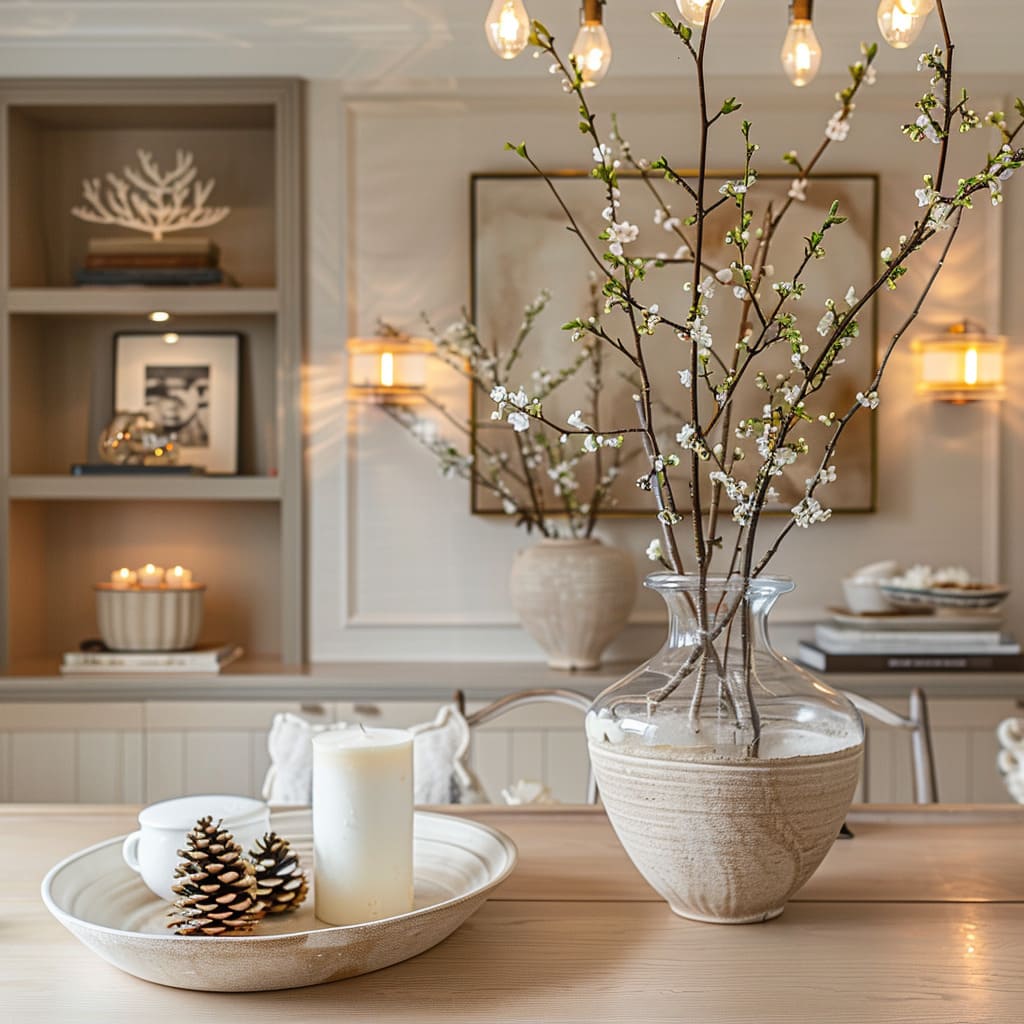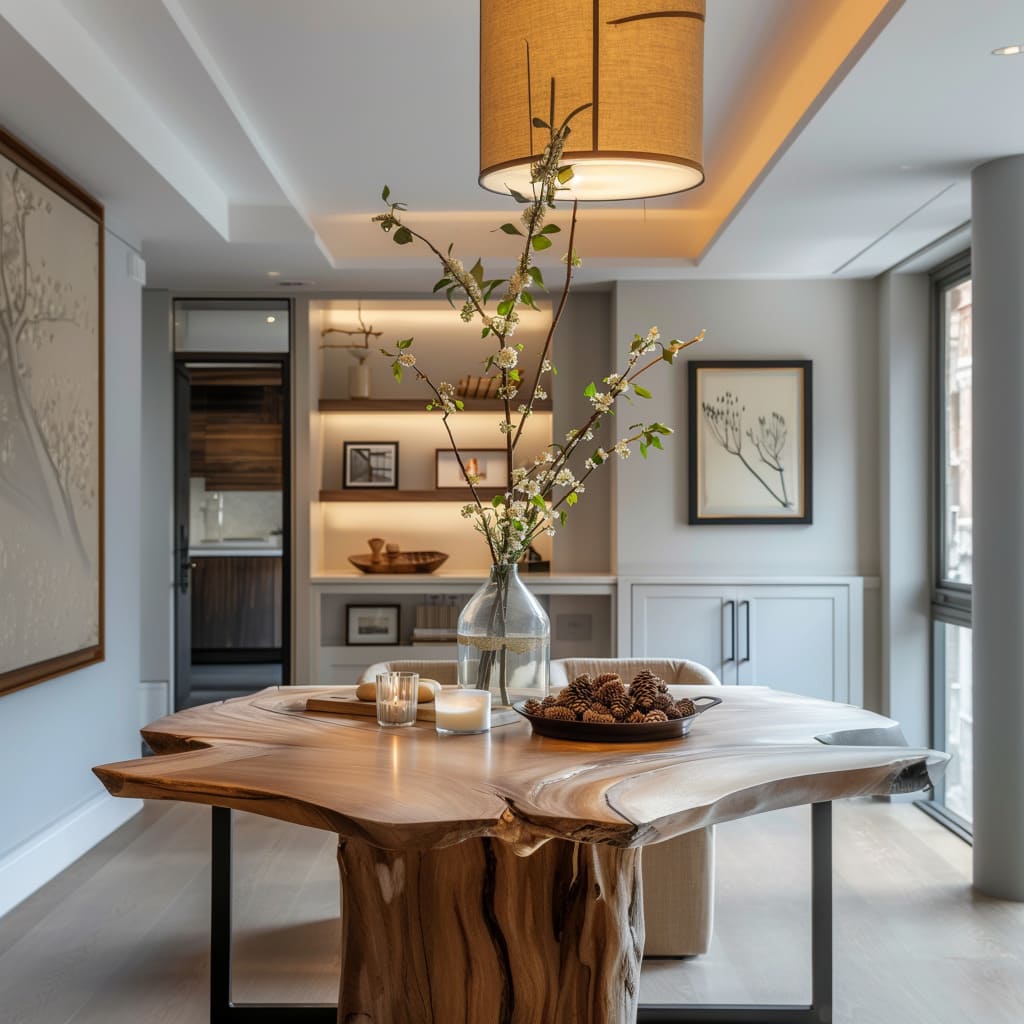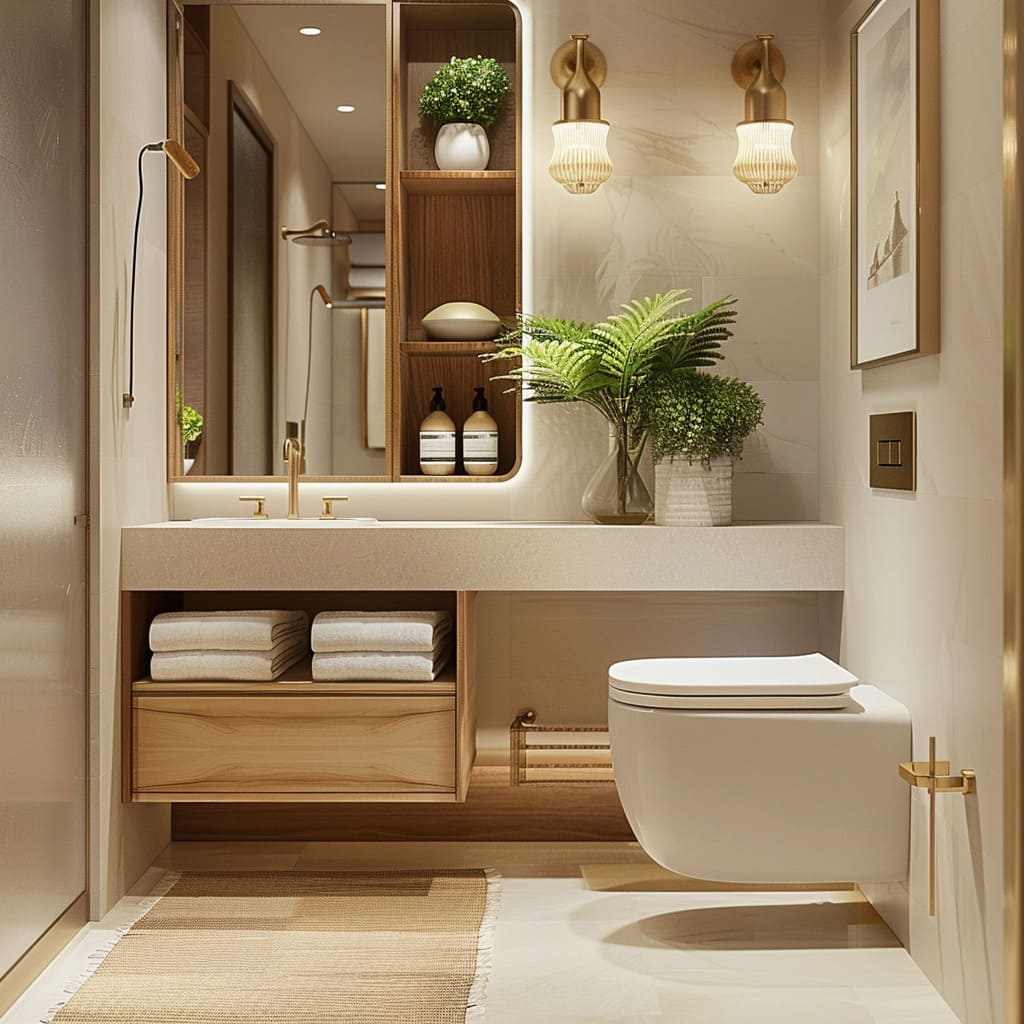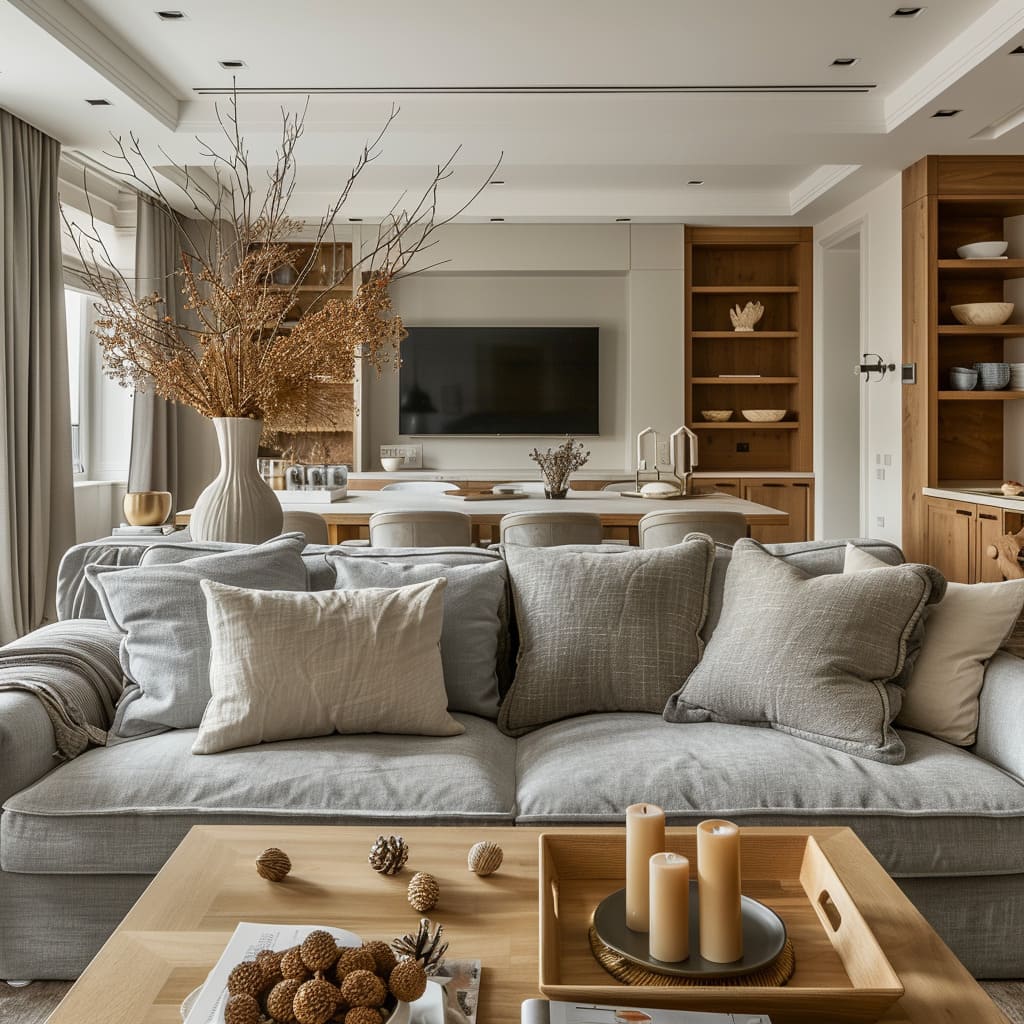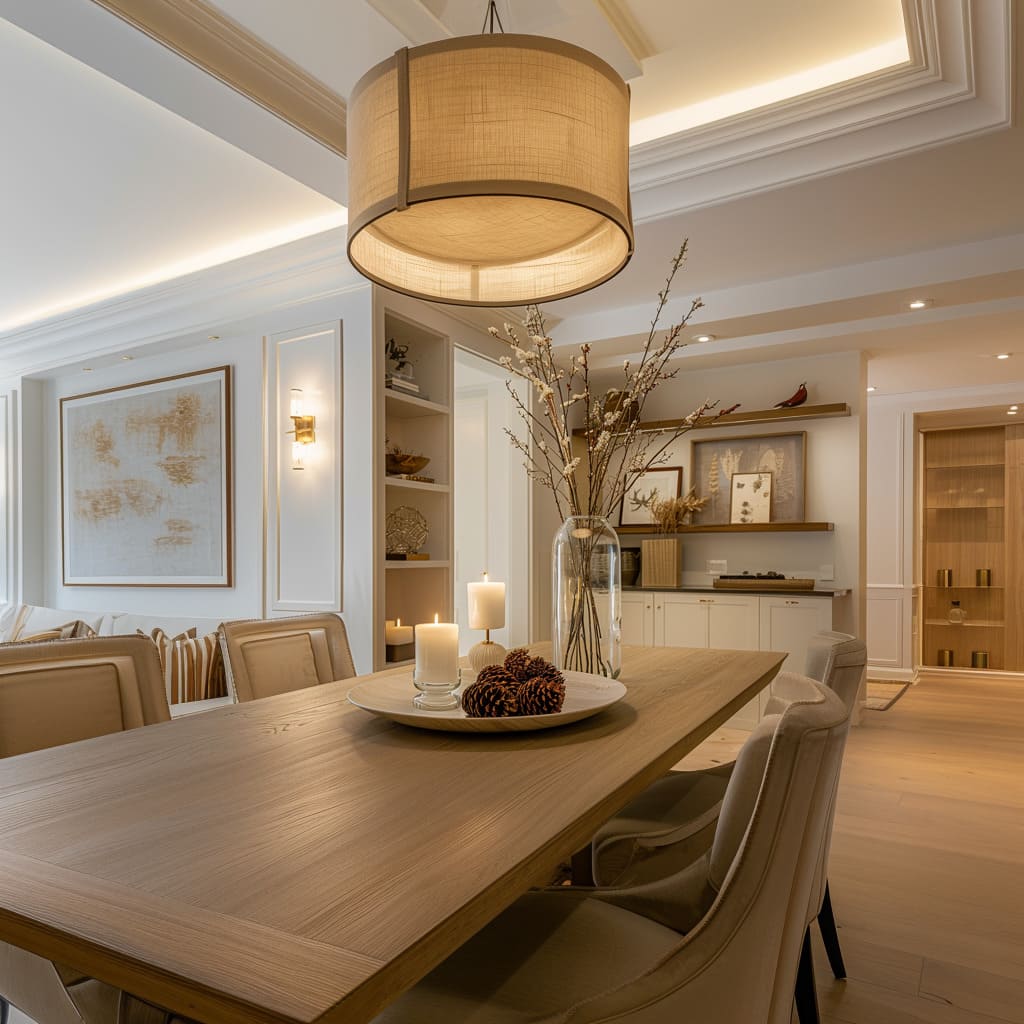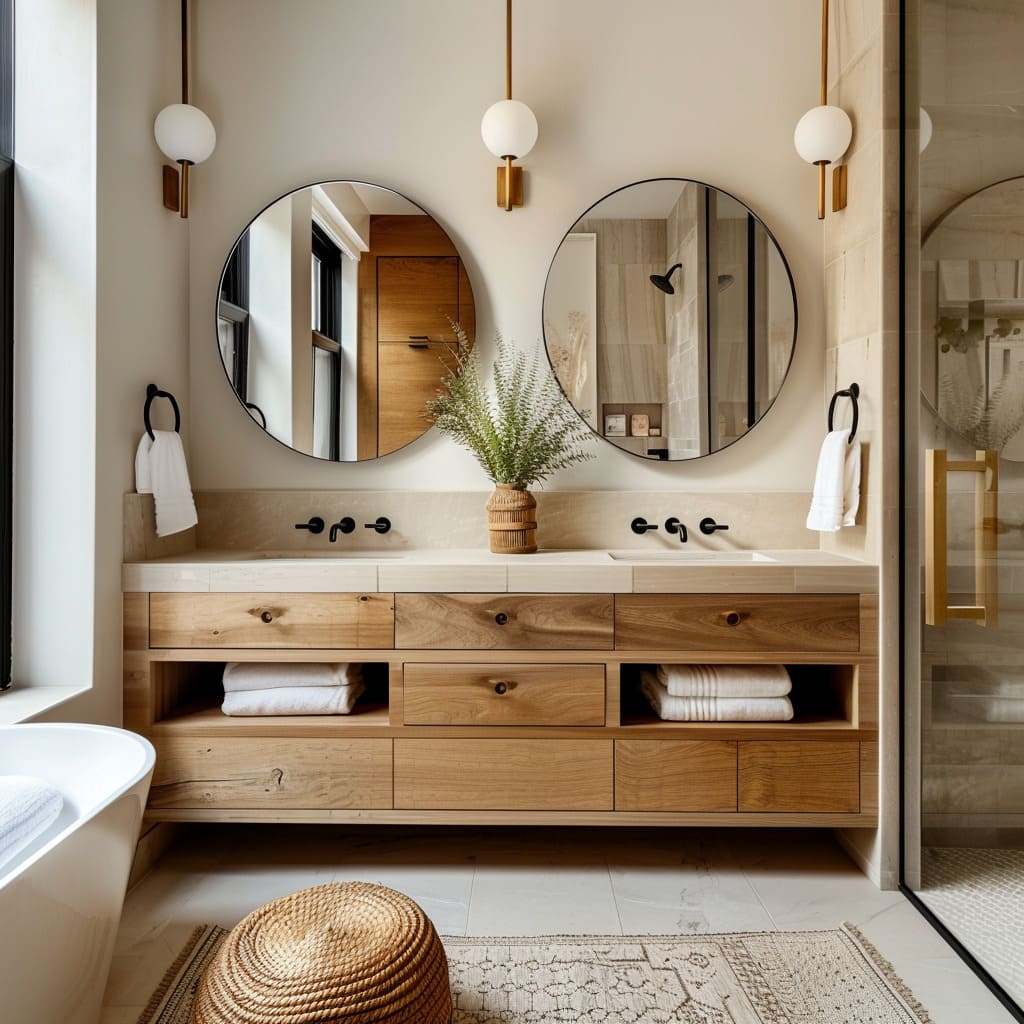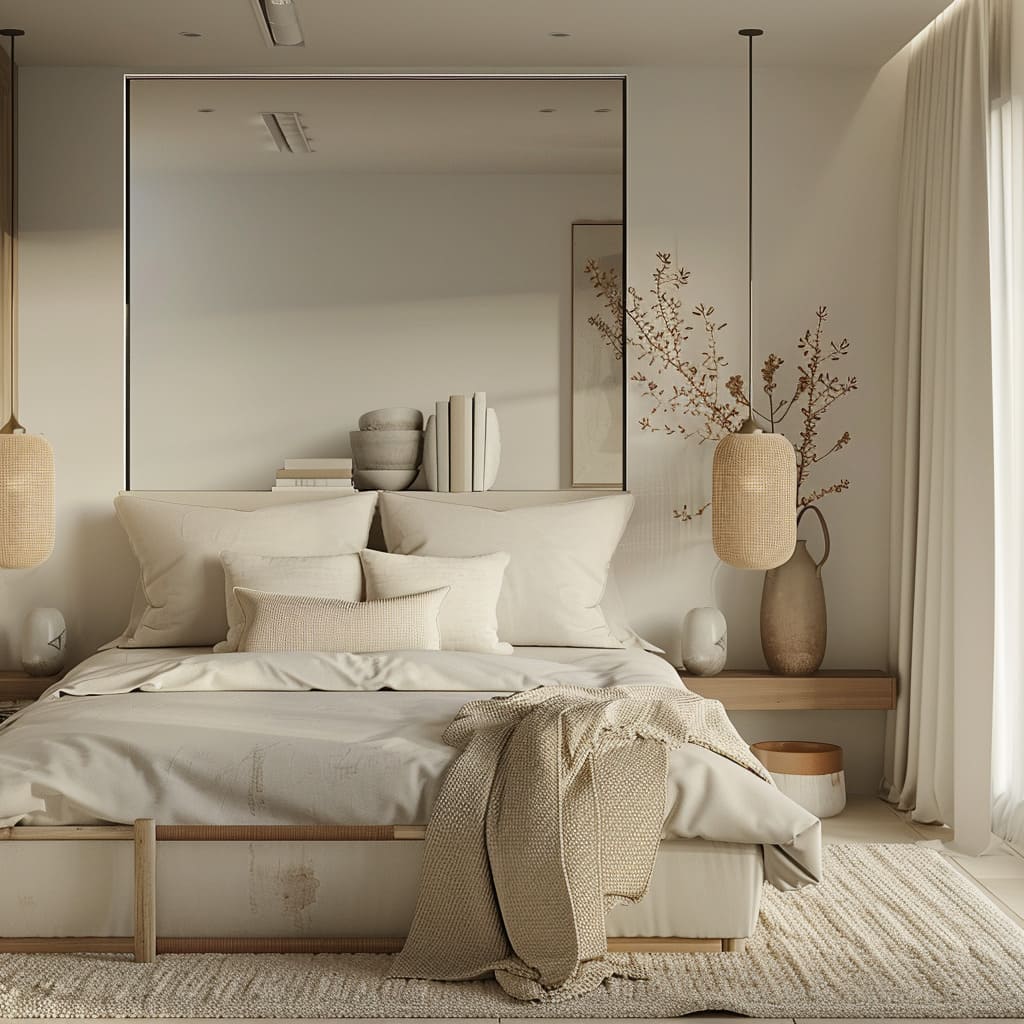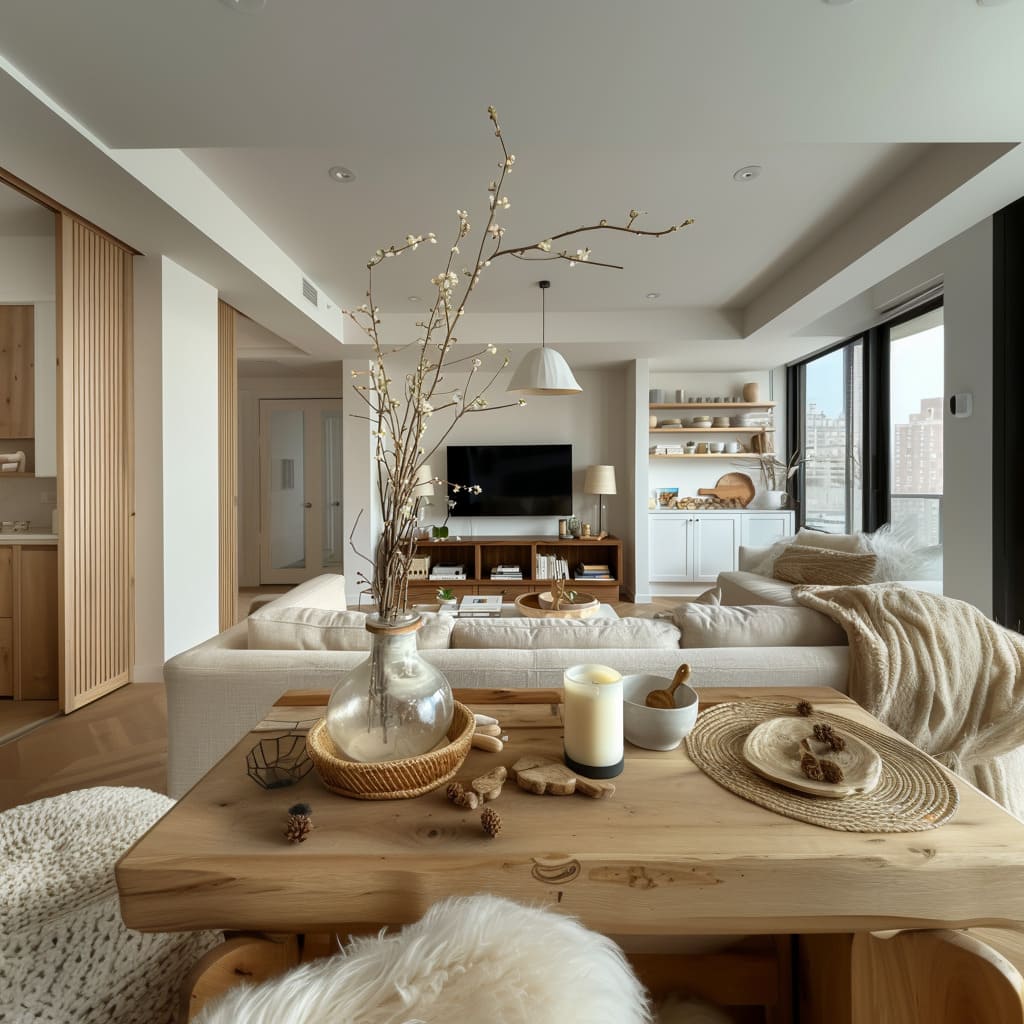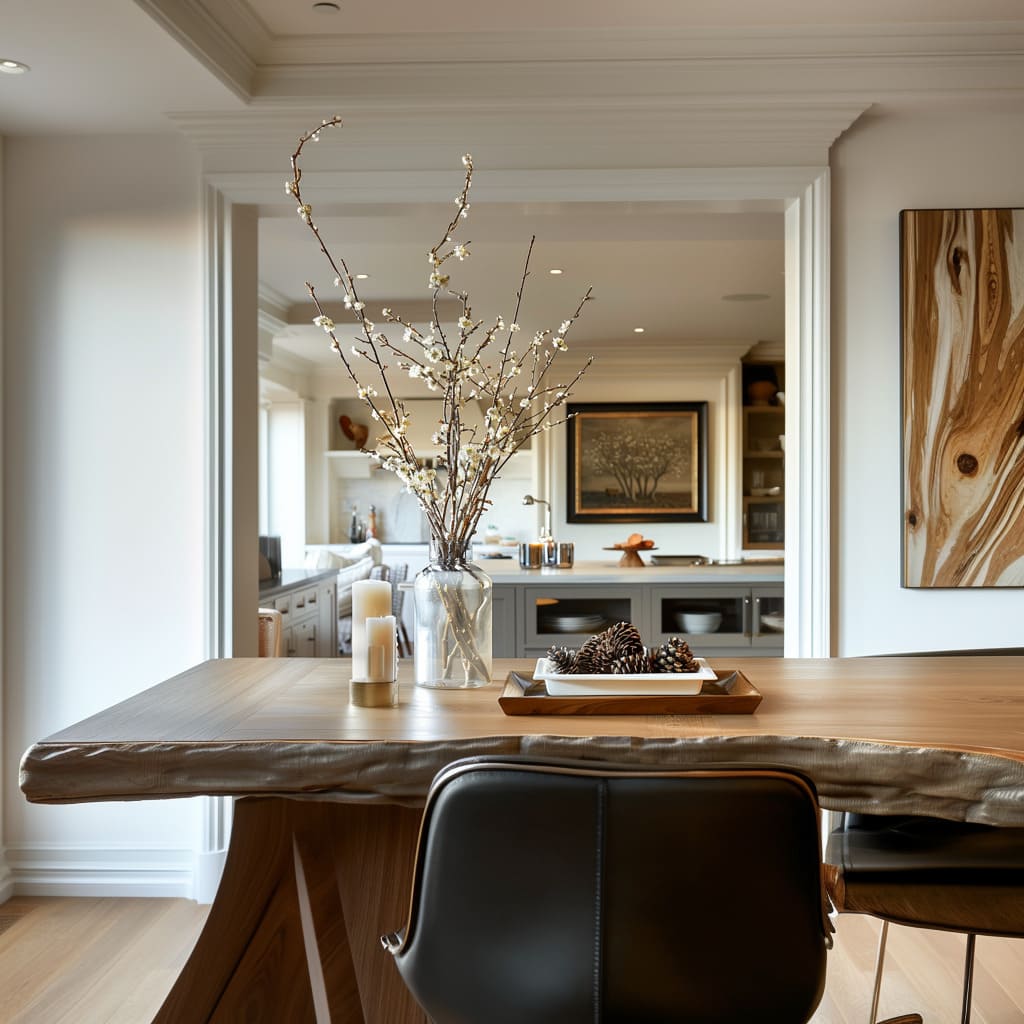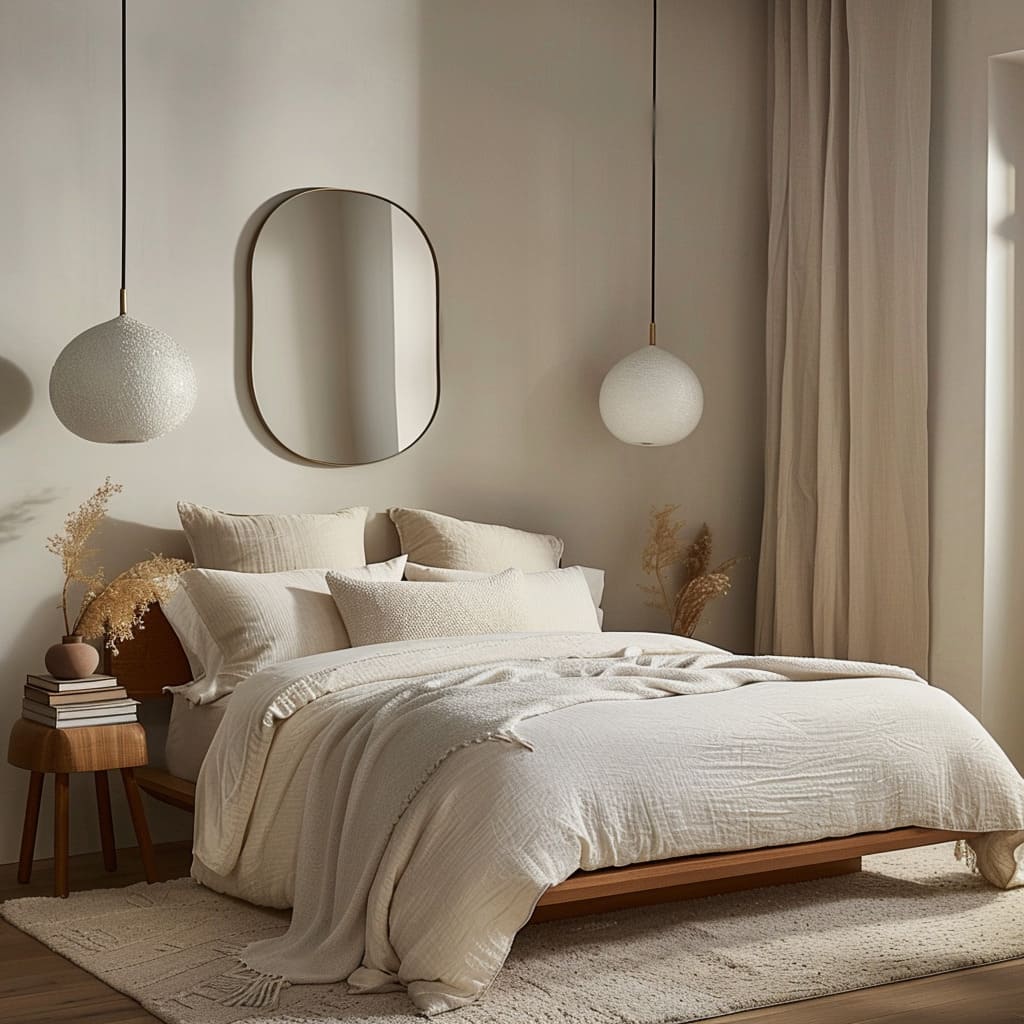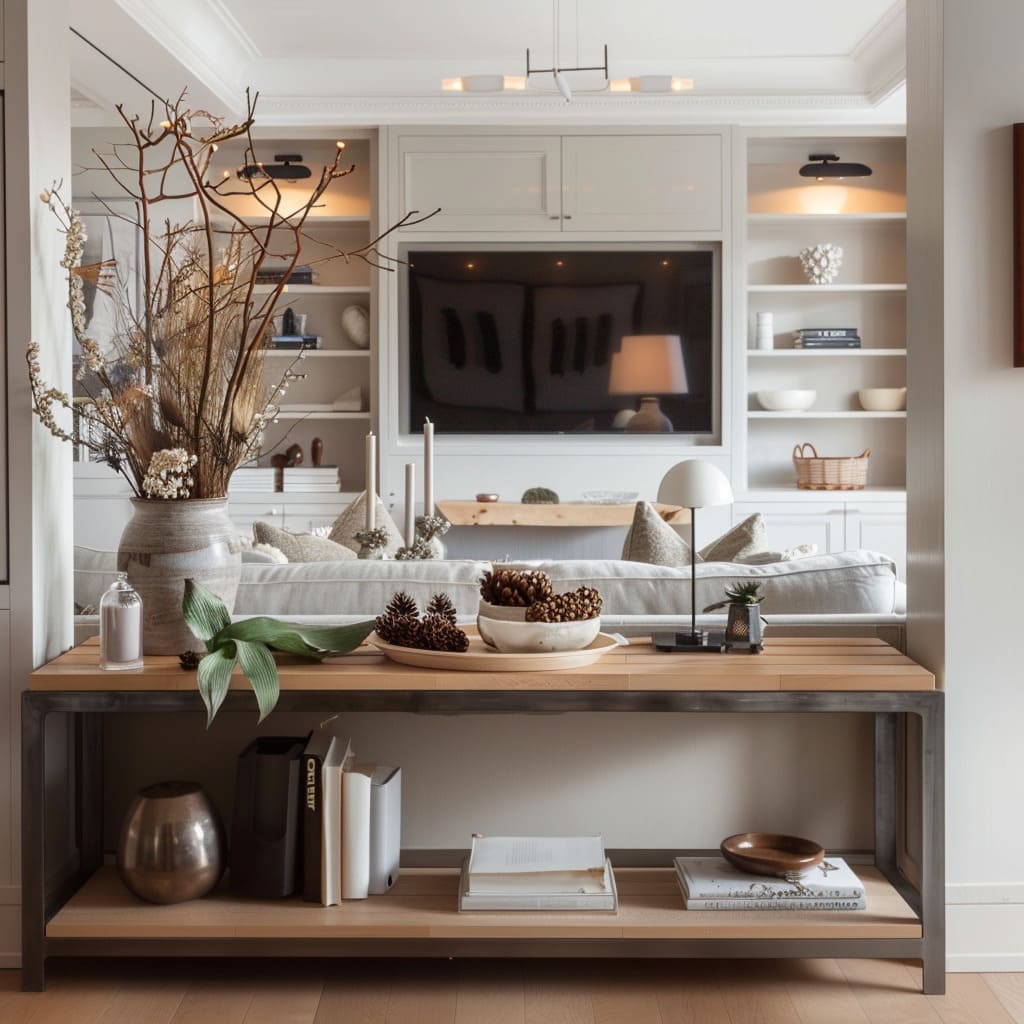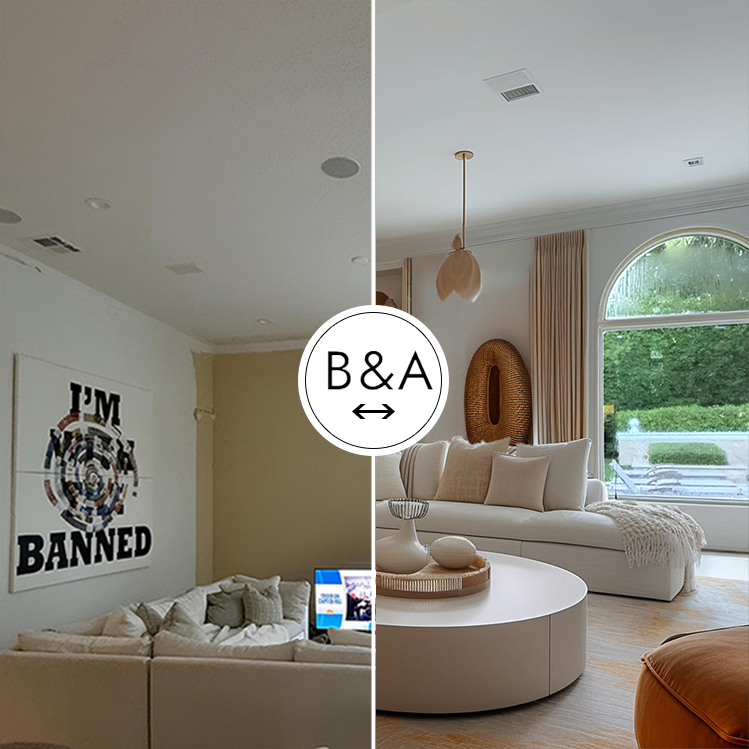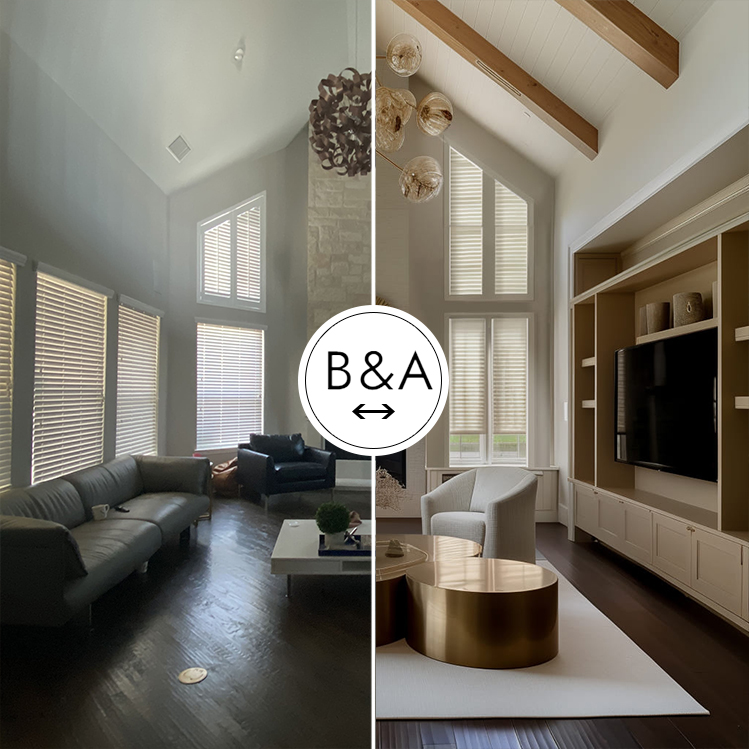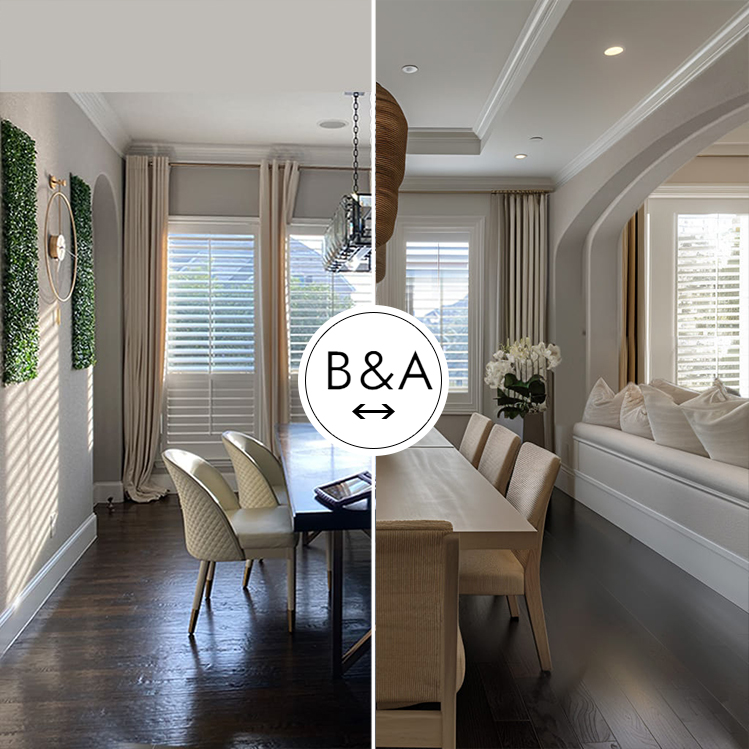Creating a home that feels both current and timeless can be a challenge, but with the right approach, it’s entirely achievable. Modern transitional design is about balancing the sleek and clean lines of contemporary design with the warmth and comfort of traditional styles.
This blend creates spaces that are both comfortable and visually appealing, where every element feels intentional and contributes to the overall atmosphere of the home. By focusing on neutral color palettes, quality materials, and a thoughtful mix of modern and classic elements, you can transform your living spaces into a harmonious reflection of modern transitional elegance
Understanding Modern Transitional Elegance
Defining the Style
Modern transitional design is an approach that emphasizes balance. It draws from the best of both worlds: the simplicity and functionality of modern design and the classic, time-honored appeal of traditional interiors.
This style avoids being too stark or too ornate, instead finding a middle ground where comfort meets style. The goal is to create spaces that feel fresh and inviting, using clean lines, thoughtful furniture selections, and a restrained use of color. In modern transitional design, every piece should contribute to a sense of harmony, whether it’s a contemporary sofa or a vintage-inspired coffee table
The Role of Color Palettes
The palette often revolves around neutral tones such as soft whites, warm beiges, and gentle grays. These colors create a calming backdrop that allows other elements, such as furniture and decor, to stand out. The beauty of using neutral tones is their versatility; they can be layered to add depth and interest to a space without overwhelming it.
Subtle variations in color can help to delineate different areas within a room while maintaining a cohesive feel. For example, a light beige on the walls can be paired with a deeper taupe for the sofa, with cushions in various shades of cream and white to tie the look together. This restrained use of color is key to achieving the understated elegance that characterizes modern transitional interiors
How do the specific shades of beige and gray used in the color palette influence the overall mood and atmosphere of the room, beyond simply creating a calming backdrop?
The specific shades of beige and gray can significantly influence the mood and atmosphere of a room. For example, a warm beige might impart a cozy and inviting feel, enhancing the sense of comfort and relaxation.
This shade often adds a touch of warmth and approachability, making a space feel more intimate and welcoming
On the other hand, a cool gray can evoke a sense of calmness and clarity. It’s often associated with modernity and simplicity, contributing to a sleek and sophisticated atmosphere.
This color can make a room feel more expansive and airy, especially when paired with light furnishings and ample natural light
Combining these shades allows for a dynamic interplay between warmth and coolness, creating a balanced and nuanced environment. The careful selection and placement of these colors help set the emotional tone of the room, whether aiming for a cozy, serene retreat or a sleek, contemporary space
In what ways can subtle color variations be strategically employed to define different functional areas within an open-plan space, while still maintaining a cohesive look?
Subtle color variations can be effectively employed in open-plan spaces to delineate different functional areas while preserving a unified aesthetic. One approach is to use slightly different shades of a neutral color to create visual boundaries without stark contrasts.
For example, you might choose a lighter beige for a dining area and a slightly deeper taupe for a living area. This approach helps in defining spaces while keeping the overall look cohesive
Another technique involves layering textures and materials within the same color family. Using different finishes or patterns can add depth and interest without disrupting the flow. For instance, a matte finish on the walls in one area can contrast with a slightly glossy or textured finish in another, creating subtle distinctions that guide the eye and organize the space
Area rugs or different upholstery fabrics can also help define zones within an open-plan layout. A distinct but complementary rug in the dining area or a different fabric for cushions in the seating area can signal different uses while sticking to the overarching color scheme.
This method allows for functional separation and enhances the visual organization of the space
By strategically applying these techniques, you can maintain a cohesive look that ties the various areas together while effectively distinguishing their individual purposes.
How does the layering of neutral tones in different textures and materials contribute to the depth and visual interest of a room, and what impact does this have on the perceived comfort and sophistication of the space?
Layering neutral tones through different textures and materials adds significant depth and visual interest to a room.
By incorporating various textures such as soft linens, plush rugs, and sleek wood finishes, the room gains a rich, tactile quality that enhances its visual appeal. This layering effect creates a more dynamic and engaging space, as the eye is drawn to the interplay of different surfaces and finishes
For instance, a smooth, matte wall color paired with a textured, patterned rug or a soft velvet cushion can create a nuanced and sophisticated environment. The contrast between these textures adds dimension to the room without introducing bold colors, keeping the overall palette harmonious while making each element stand out
The impact on comfort and sophistication is notable. Textural variety can make a space feel more inviting and comfortable by adding layers of sensory experience. A room that incorporates a range of textures—such as a soft wool throw, a sleek leather sofa, and a woven basket—feels more curated and thoughtfully designed.
This attention to detail in texture contributes to an overall sense of elegance and refinement, making the space feel both stylish and comfortable
In summary, layering neutral tones through varied textures and materials enriches the visual and tactile experience of a room, enhancing its depth and creating an environment that feels both sophisticated and inviting
Key Elements of Modern Transitional Design
Furniture Choices
When selecting furniture for a modern transitional home, it’s important to focus on pieces that blend comfort with style. The furniture should have clean lines and a streamlined appearance, but it should also offer the warmth and familiarity associated with traditional design. For instance, a sofa might feature a simple silhouette with straight arms and neutral upholstery, but it could be paired with a wooden coffee table that showcases natural wood grain, adding texture and depth to the room.
The key is to choose high-quality pieces that can serve as the foundation of the room’s design. Incorporating a mix of materials, such as metal and wood, can also help to balance the modern and traditional aspects of the space.
Lighting Solutions
Lighting is an integral part of any design scheme, and in modern transitional spaces, it’s particularly important to get it right. The lighting should complement the overall design without overpowering it. A layered approach works well, with a combination of overhead lighting, task lighting, and ambient lighting.
Recessed lights can provide general illumination without drawing too much attention, while pendant lights can serve as focal points, adding interest and style to the room. Wall sconces are another great option, offering both function and form. Choosing fixtures that combine modern and traditional elements, such as a contemporary pendant light with a classic drum shade, can help to reinforce the overall design theme
Decor and Accessories
In modern transitional design, decor and accessories are used to add character and warmth to a space without cluttering it. The key is to select items that are both beautiful and functional. For example, abstract art pieces with neutral tones can add visual interest to a room without detracting from its overall simplicity.
Natural elements, such as dried branches in a ceramic vase or a woven rug made from natural fibers, can soften the lines of modern furniture and add a touch of organic warmth. When it comes to accessories, less is often more. A few carefully chosen pieces, such as a bowl of pinecones on a coffee table or a set of candles on a console table, can make a big impact without overwhelming the space.
How can specific furniture materials, such as the choice between wood and metal, influence the overall aesthetic and functionality of a modern transitional room, and how do they interact with other design elements?
The choice of furniture materials, such as wood and metal, plays a crucial role in shaping the aesthetic and functionality of a modern transitional room. Wood, with its natural grain and warmth, adds a sense of comfort and tradition. It can ground the space, providing a classic touch that complements contemporary elements.
For instance, a wooden coffee table or a wooden-framed mirror introduces texture and a natural element, creating a visually appealing contrast against modern, streamlined pieces
Metal, on the other hand, brings a sleek, modern touch to the room. It often features clean lines and reflective surfaces, which can enhance the room’s sophistication and add a sense of contemporary flair. When used in conjunction with wood, metal elements—such as metal legs on a coffee table or a metal light fixture—can create a dynamic interplay between warmth and sleekness. This combination helps to balance the modern and traditional aspects of the design, ensuring that neither overwhelms the other
The interaction between wood and metal also affects the room’s functionality. Wood provides durability and a sense of permanence, often making it suitable for high-use furniture like dining tables or storage pieces. Metal, being more versatile, can be used in fixtures and accents where flexibility and a modern look are desired
Overall, the combination of wood and metal creates a layered aesthetic that enhances both visual interest and practical utility. The materials complement each other, with wood adding warmth and texture, and metal introducing modernity and refinement. This interaction helps to achieve the balanced, harmonious look characteristic of modern transitional design
In what ways can the layering of different types of lighting—overhead, task, and ambient—create a balanced and inviting atmosphere in a room, and how can this approach be tailored to both enhance style and functionality?
Layering different types of lighting—overhead, task, and ambient—can significantly enhance the balance and inviting nature of a room. Each type serves a distinct purpose and, when combined thoughtfully, they create a dynamic and adaptable lighting scheme that improves both style and functionality
Overhead lighting provides general illumination that ensures the room is well-lit and functional. Recessed lights or a central chandelier offer broad, even lighting that serves as the foundation of your room’s lighting scheme. This type of lighting is essential for daily tasks and overall visibility but can be harsh if used alone
Task lighting is designed to focus light on specific areas where detailed work is performed, such as reading or cooking. Desk lamps, pendant lights over a kitchen island, or adjustable floor lamps provide targeted lighting that enhances functionality and reduces strain on the eyes.
Task lighting can be positioned to highlight work areas while ensuring the rest of the room maintains a softer, ambient glow.
Ambient lighting creates a warm and inviting atmosphere by filling in the gaps left by overhead and task lighting. Soft, diffuse light from sources like floor lamps, wall sconces, or indirect lighting strips adds depth and warmth to the space. This type of lighting helps to create a cozy and relaxing environment, making it ideal for living areas and bedrooms
To tailor this approach to both style and functionality, consider the following:
- Blend styles: Choose fixtures that align with the room’s overall aesthetic. For a modern transitional room, you might opt for a sleek chandelier paired with industrial-style task lamps and soft, ambient sconces. This mix maintains visual interest and complements the room’s design.
- Adjust lighting levels: Use dimmers to control the intensity of each lighting type.
This allows you to create different moods and adapt the lighting to various activities, from bright illumination for work to soft lighting for relaxation.
Overall, a well-considered layering of overhead, task, and ambient lighting creates a balanced and inviting space, enhancing both the room’s functionality and its visual appeal.
How do various lighting fixtures, such as recessed lights, pendant lights, and wall sconces, contribute to the visual cohesion of a modern transitional space, and how can their placement and design impact the room’s ambiance?
Recessed lights, pendant lights, and wall sconces each play a distinct role in enhancing the visual cohesion of a modern transitional space while influencing the room’s ambiance
Recessed lights provide unobtrusive, general illumination that blends seamlessly into the ceiling. Their minimalist design and adjustable nature allow them to distribute light evenly across the room without drawing attention to themselves. This subtlety helps maintain the clean lines characteristic of modern design while ensuring that the space is well-lit.
Recessed lights can be strategically placed to highlight architectural features or create a balanced overall glow, contributing to the room’s visual harmony.
Pendant lights serve as both functional and decorative elements. They introduce focal points that can enhance the room’s style by adding visual interest and texture. For example, a sleek pendant light over a dining table or kitchen island can serve as a statement piece, adding a touch of sophistication and drawing the eye to specific areas.
Their design can range from modern to traditional, allowing them to bridge the gap between contemporary and classic elements, thereby reinforcing the transitional theme.
Wall sconces offer a dual function of providing accent lighting and adding decorative flair. Their placement on walls can create pockets of light that enhance the room’s texture and depth. Wall sconces can be used to highlight artwork, architectural details, or simply to add a warm, inviting glow.
Their designs can vary from modern and sleek to more traditional and ornate, contributing to the room’s overall visual cohesion while emphasizing specific elements or zones.
In terms of impact on ambiance, recessed lights offer a clean, unobtrusive illumination that supports a bright and functional atmosphere, while pendant lights introduce focused, stylistic accents that enhance the room’s character. Wall sconces add warmth and a layer of depth, creating a cozy and inviting environment. The strategic placement and design of these fixtures can transform a space, ensuring that each area is appropriately lit while maintaining a cohesive and balanced aesthetic.
Designing Specific Spaces with Modern Transitional Elegance
Living Room Design
The living room is often the heart of the home, and in modern transitional design, it should be both inviting and stylish. Start by arranging the furniture in a way that promotes conversation and comfort.
A neutral-colored sofa can be the focal point of the room, paired with a coffee table that features a mix of materials, such as wood and metal. Use soft textiles, such as throw pillows and blankets, to add warmth and texture. The entertainment area should be sleek and uncluttered, with a wall-mounted TV and a minimalistic console table that offers both storage and display space.
Incorporate a mix of modern and traditional elements, such as contemporary lighting fixtures and classic wood furniture, to create a balanced and cohesive look.
Bedroom Design
In the bedroom, the goal is to create a space that feels restful and calm. A neutral color palette is essential, with soft shades of white, beige, and gray setting the tone. The bed should be the focal point of the room, with a low-profile design and simple, elegant bedding.
Layered textures, such as a plush duvet and a textured throw, can add depth and interest. To enhance the sense of calm, keep the decor minimal, with a few well-chosen pieces such as abstract art or a vase of dried flowers. Lighting should be soft and ambient, with bedside lamps or wall sconces providing a warm glow.
The overall effect should be a space that feels cozy and inviting, perfect for winding down at the end of the day.
Hallway and Entryway Design
The hallway and entryway are often overlooked spaces, but in a modern transitional home, they should be given the same attention to detail as the rest of the house. Start with a neutral color palette that sets the tone for the rest of the home. Consider adding wainscoting or other architectural details to create visual interest.
A console table can provide a place to drop keys or display a few decorative items, such as a vase of flowers or a set of candles. Built-in shelving can offer additional storage while keeping the space looking clean and uncluttered. Art and decor should be minimal and understated, with a focus on natural materials and simple, elegant designs.
Lighting is also important, with a central ceiling fixture providing overall illumination and wall sconces adding warmth and ambiance.
Tips for Achieving Cohesion Across Your Home
Maintaining a Consistent Color Palette
One of the keys to achieving modern transitional elegance is maintaining a consistent color palette throughout the home. This doesn’t mean that every room has to be the same color, but rather that the colors used in each space should complement one another. Start with a base of neutral tones, such as soft whites, beiges, and grays, and then layer in subtle variations to add depth and interest.
Accent colors can be used sparingly to add personality and warmth, but they should always be chosen with the overall palette in mind. The goal is to create a seamless flow from one room to the next, with each space feeling like a natural extension of the others.
Balancing Old and New
A successful modern transitional home is one that finds the right balance between old and new. This means incorporating both modern and traditional elements in a way that feels intentional and harmonious. For example, a contemporary sofa might be paired with a vintage-inspired coffee table, or a modern pendant light might hang over a classic dining table.
The key is to choose pieces that complement one another and contribute to the overall aesthetic. Avoid mixing too many styles or using too many bold colors, as this can create a disjointed look. Instead, focus on creating a cohesive design that feels balanced and well thought out.
Incorporating Natural Elements
Natural elements are an important part of modern transitional design, helping to soften the lines of modern furniture and add warmth and texture to a space. Consider incorporating natural materials such as wood, stone, and linen into your design. A wooden console table, a stone fireplace, or linen curtains can all add a touch of organic warmth to a room.
Plants and flowers are another great way to bring the outdoors in and add a natural element to your decor. Choose plants that are easy to care for and that complement the overall aesthetic of your home. The goal is to create a space that feels connected to nature and that exudes warmth and comfort.
Final Touches: Personalizing Your Space
Curating Decorative Objects
The final touches in a modern transitional home are the decorative objects that reflect your personal style and taste. These items should be chosen carefully, with an emphasis on quality over quantity. A few well-chosen pieces, such as a set of candlesticks, a ceramic vase, or a sculptural object, can add character and interest to a space without overwhelming it.
Keep surfaces uncluttered and organized, with each item serving a purpose and contributing to the overall aesthetic. The goal is to create a space that feels personal and unique, but also elegant and cohesive
Choosing the Right Art
Art is an important part of any home, and in a modern transitional space, it should be chosen with care. Look for pieces that complement the overall design of the room, whether it’s a large abstract painting or a set of smaller prints. The art should be hung at eye level and spaced evenly to create a balanced and cohesive look.
Avoid using too many bold colors or patterns, as this can disrupt the overall aesthetic. Instead, focus on pieces that add depth and interest without overpowering the space. The goal is to create a home that feels curated and intentional, with every element working together to create a harmonious whole.
How do the specific types and placements of decorative objects, such as candlesticks or ceramic vases, contribute to the overall character and organization of a room in a modern transitional home?
The specific types and placements of decorative objects like candlesticks and ceramic vases play a pivotal role in shaping the overall character and organization of a room. For instance, candlesticks add a touch of sophistication and warmth, particularly when placed on a dining table or mantelpiece. They can act as focal points, drawing attention to specific areas and contributing to a refined ambiance. Their height and design can also influence the room’s visual balance, creating a sense of vertical interest and elegance.
Ceramic vases, on the other hand, introduce texture and subtle color, enriching the room’s visual appeal without overwhelming it. When placed strategically on side tables or shelves, they can add depth and variety to the space. The choice of vase shape, size, and finish can complement or contrast with other design elements, enhancing the room’s cohesion. For example, a sleek, modern vase might contrast with a more traditional piece of furniture, creating a pleasing juxtaposition that reflects the transitional style
The organization of these objects is equally important. Keeping surfaces uncluttered while arranging items thoughtfully ensures that each piece serves a purpose and contributes to the overall aesthetic. Careful placement, such as grouping similar objects together or arranging them in a way that guides the eye, helps maintain visual harmony and prevents the room from feeling chaotic. This strategic arrangement allows decorative objects to enhance the space, adding character and personal touch while supporting the room’s overall design
What strategies can be employed to ensure that art pieces, such as abstract paintings or smaller prints, complement the design of the room while enhancing the overall aesthetic without introducing too much visual disruption?
To ensure that art pieces like abstract paintings or smaller prints complement the room’s design while enhancing the overall aesthetic, several strategies can be employed:
Match Art to the Room’s Color Palette: Select art that incorporates colors already present in the room. This ensures that the pieces harmonize with the existing decor rather than clashing with it.
For example, an abstract painting with subtle hues that echo the room’s neutral tones can blend seamlessly while adding a touch of sophistication.
Consider Scale and Proportion: Choose art pieces that are proportionate to the size of the wall or space where they will be displayed. A large abstract painting can act as a focal point on a large wall, while a series of smaller prints can be used to create a gallery wall. Ensuring that the size of the artwork complements the scale of the room helps maintain balance and prevents the art from overwhelming the space.
Maintain Visual Balance: Arrange art in a way that creates visual balance. Hang pieces at eye level to ensure they are easily appreciated, and space them evenly to create a cohesive look. For a more dynamic display, consider asymmetrical arrangements or groupings that add interest without disrupting the overall harmony of the room.
Use Frames and Mats to Integrate Art: Choose frames and mats that match or complement the room’s decor. Simple, sleek frames can enhance modern pieces, while more ornate frames might suit traditional art. The right framing can unify different art pieces and integrate them into the room’s design.
Avoid Overcrowding: Select a few carefully chosen pieces rather than overloading the walls. A well-curated selection of art that has been thoughtfully placed can add depth and personality without causing visual clutter. This approach allows each piece to stand out and be appreciated in its own right, contributing to a refined and organized aesthetic
In what ways can the selection and arrangement of decorative items and art pieces reflect personal style while maintaining a cohesive and elegant look in a modern transitional space?
The selection and arrangement of decorative items and art pieces can reflect personal style while maintaining a cohesive and elegant look in a modern transitional space through several key approaches.Curating with intent is crucial. Choose decorative items and art pieces that resonate with your personal taste but also align with the room’s overall design.
For example, if you prefer contemporary art, incorporating abstract pieces in neutral or complementary tones can enhance the modern aspect of the transitional style. This allows for personal expression without straying from the cohesive aesthetic
Balancing personal touches with design elements helps maintain a unified look. Integrate items that showcase your style while ensuring they blend with existing design elements.
A well-chosen sculpture or vase can add uniqueness to the space, but it should be positioned in a way that complements other pieces and the room’s color scheme. This creates a personalized space that feels curated and deliberate.
Using color and texture strategically is another effective approach. Choose decorative items and art that incorporate colors and textures reflecting the room’s palette.
For instance, if the room features a mix of soft grays and warm beiges, select art and decor that include these tones or their variations. Similarly, mixing textures—like a soft rug with a sleek metal lamp—adds depth and reflects personal style while keeping the overall look unified
Creating visual harmony through arrangement is essential. Arrange art and decorative objects in a manner that maintains visual balance and harmony.
Group items in clusters or use symmetrical arrangements to achieve a cohesive and stylish look. The thoughtful placement of pieces ensures that each item enhances the space while contributing to a refined and elegant atmosphere
Conclusion
Achieving modern transitional elegance in your home is about finding the right balance between modern and traditional elements. By focusing on neutral color palettes, high-quality materials, and a mix of clean lines and classic design, you can create spaces that feel both comfortable and stylish. The key is to approach each element of the design with care and intention, from the furniture and lighting to the decor and art.
With the right approach, you can create a home that is both current and timeless, where every element works together to create a cohesive and inviting space.
